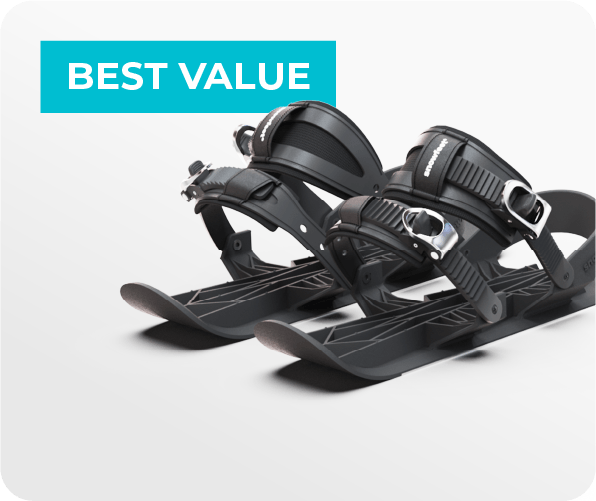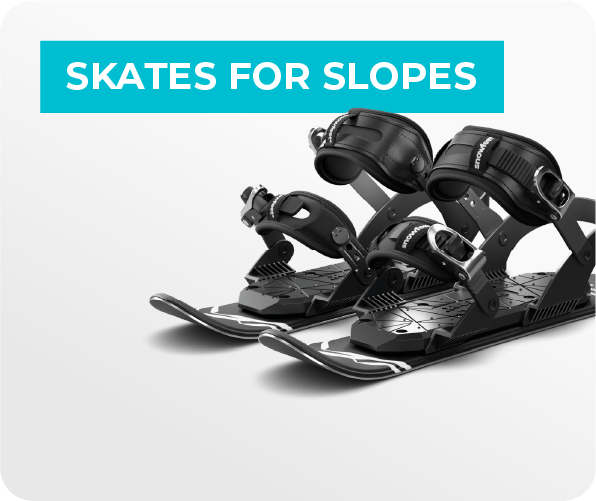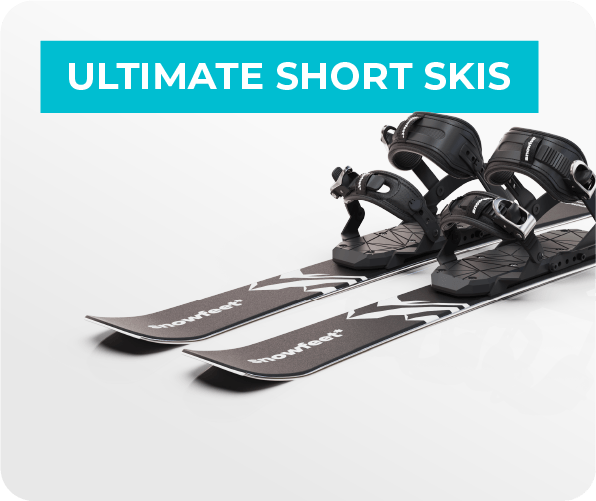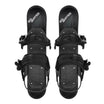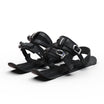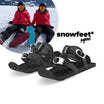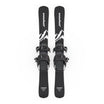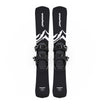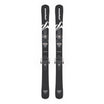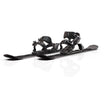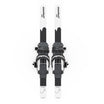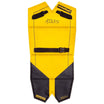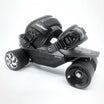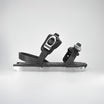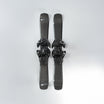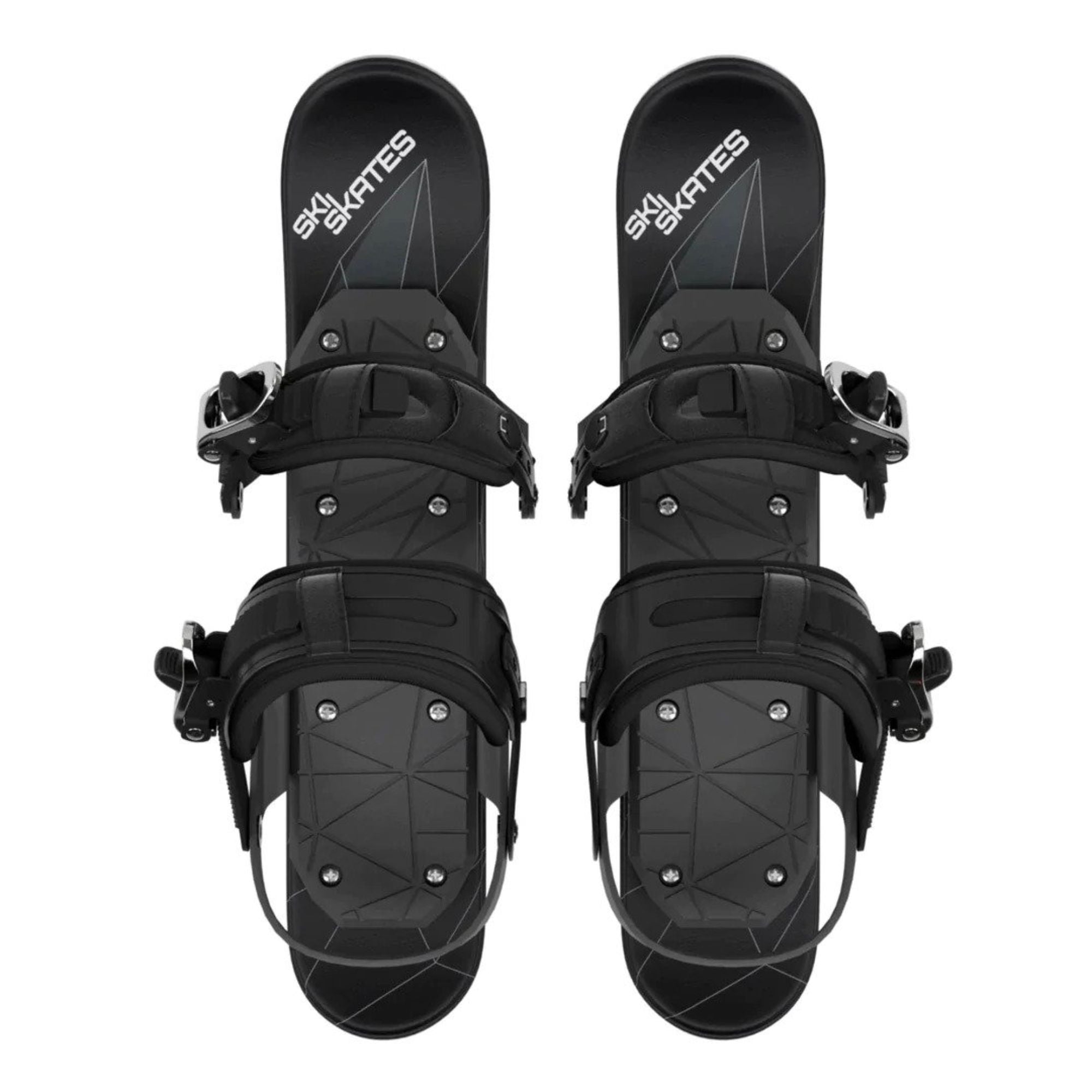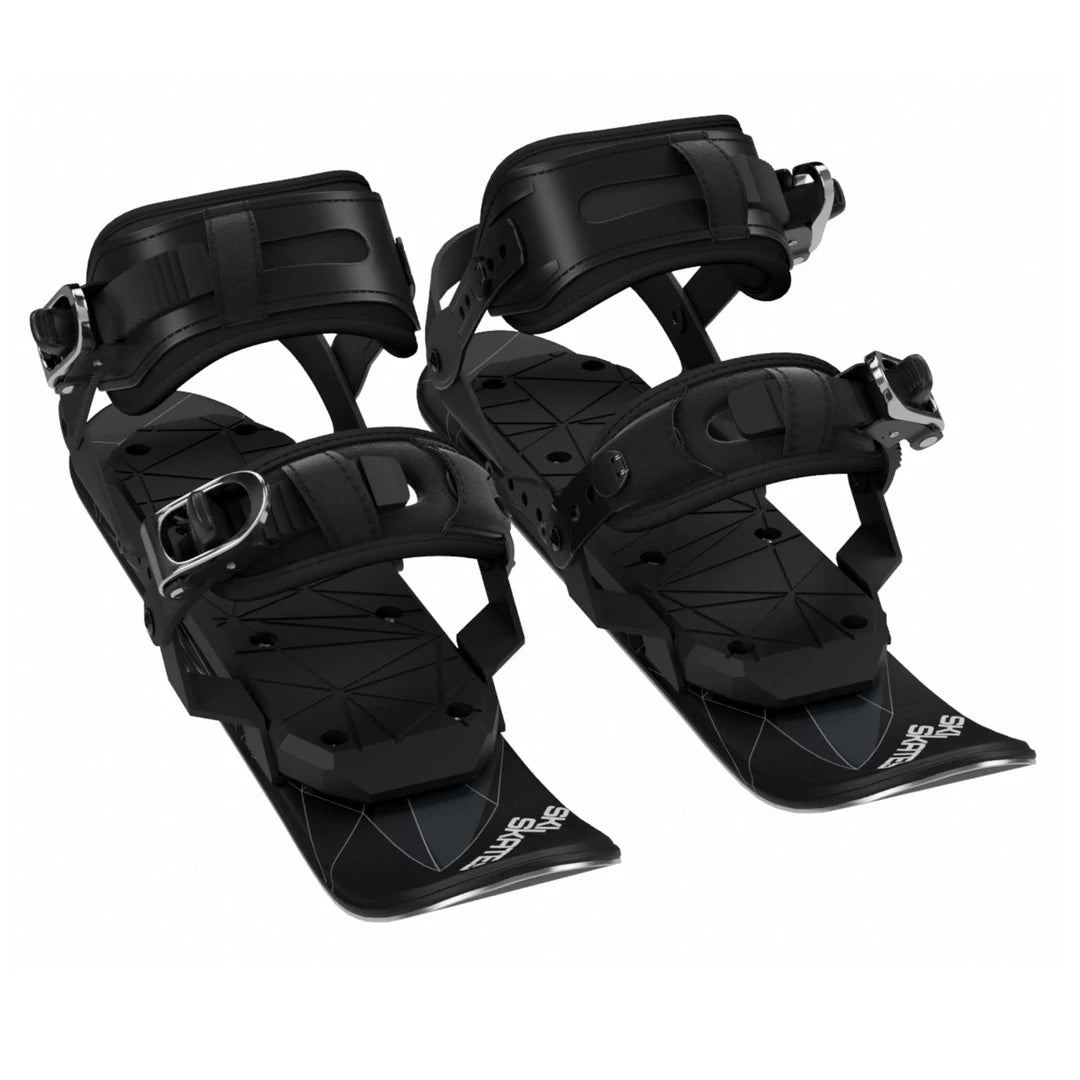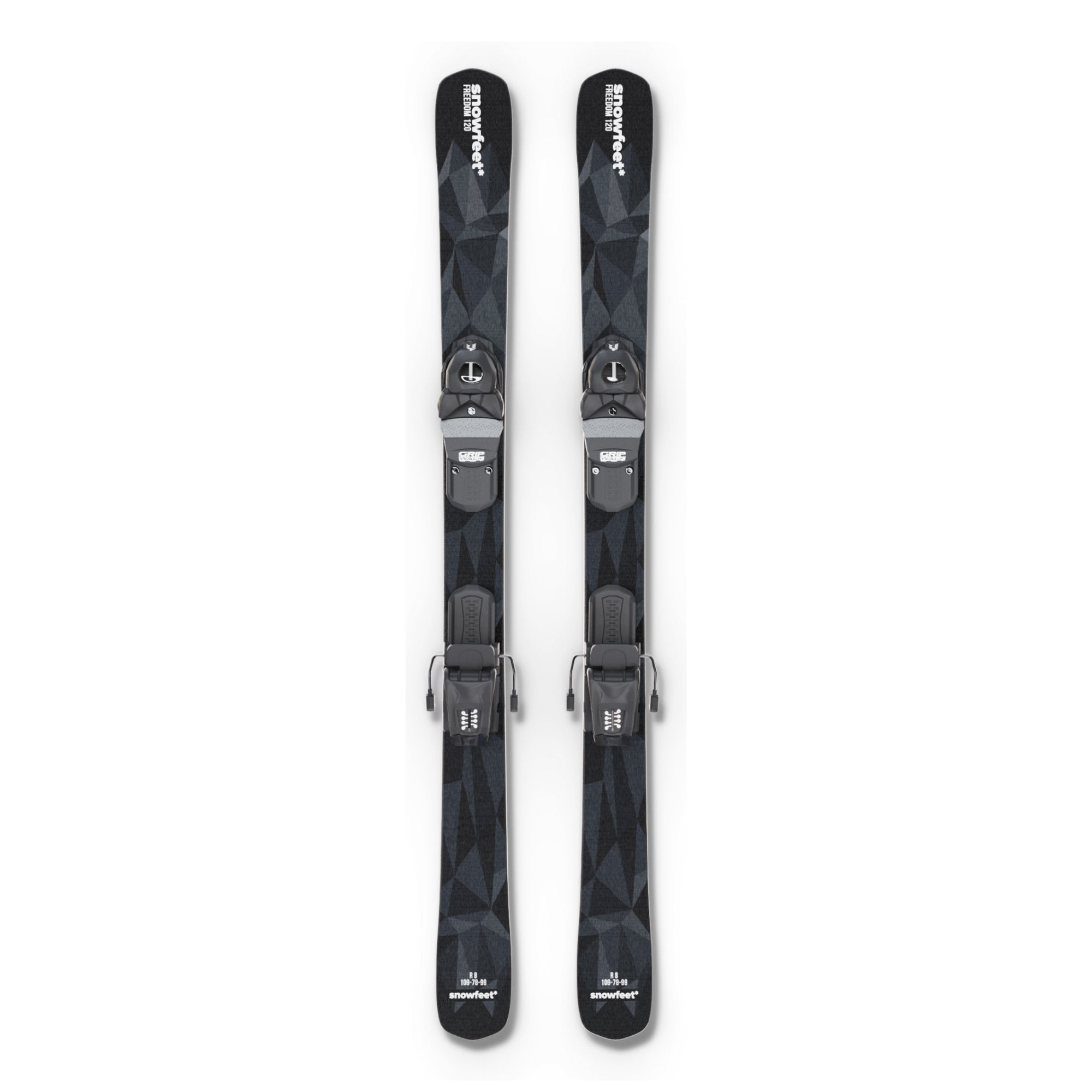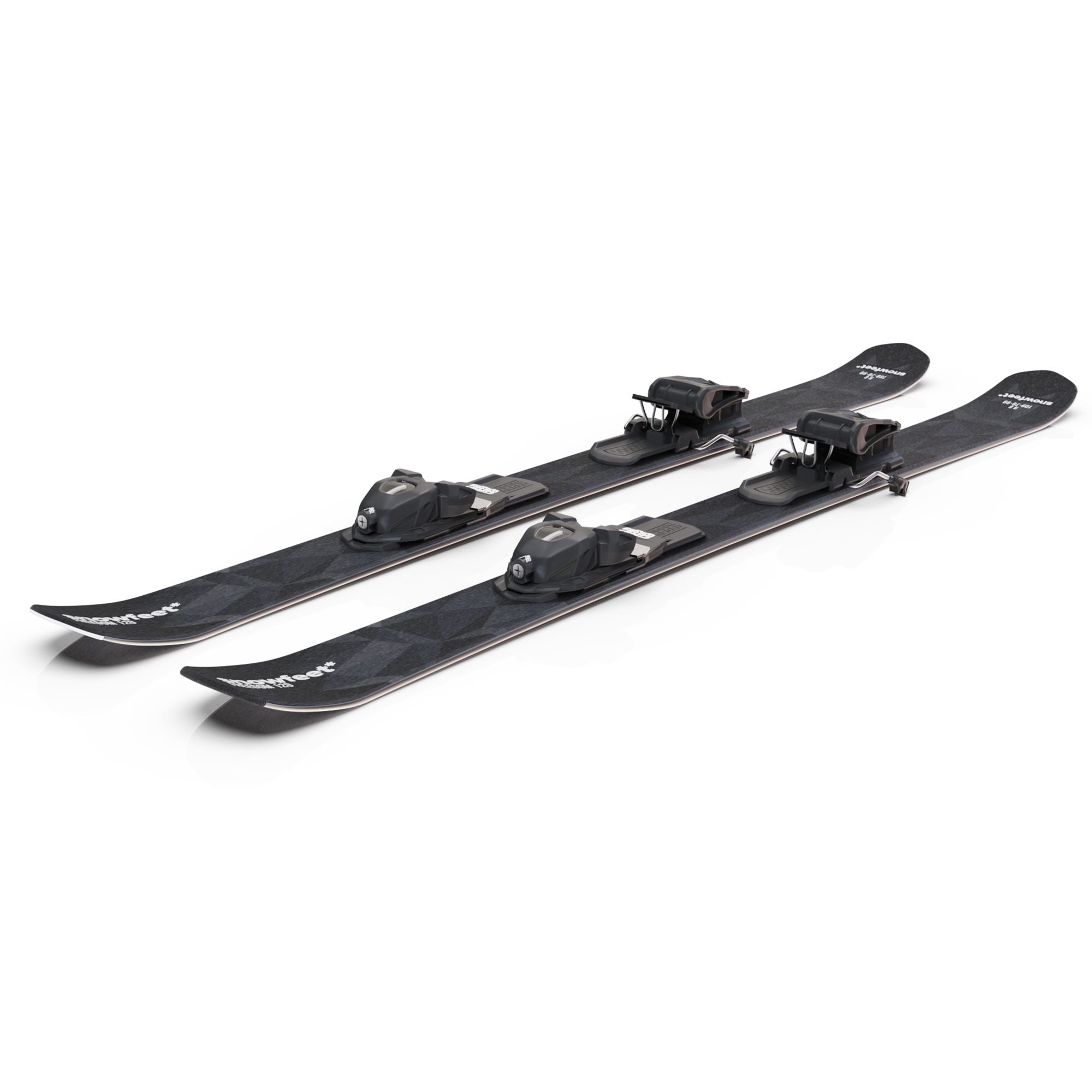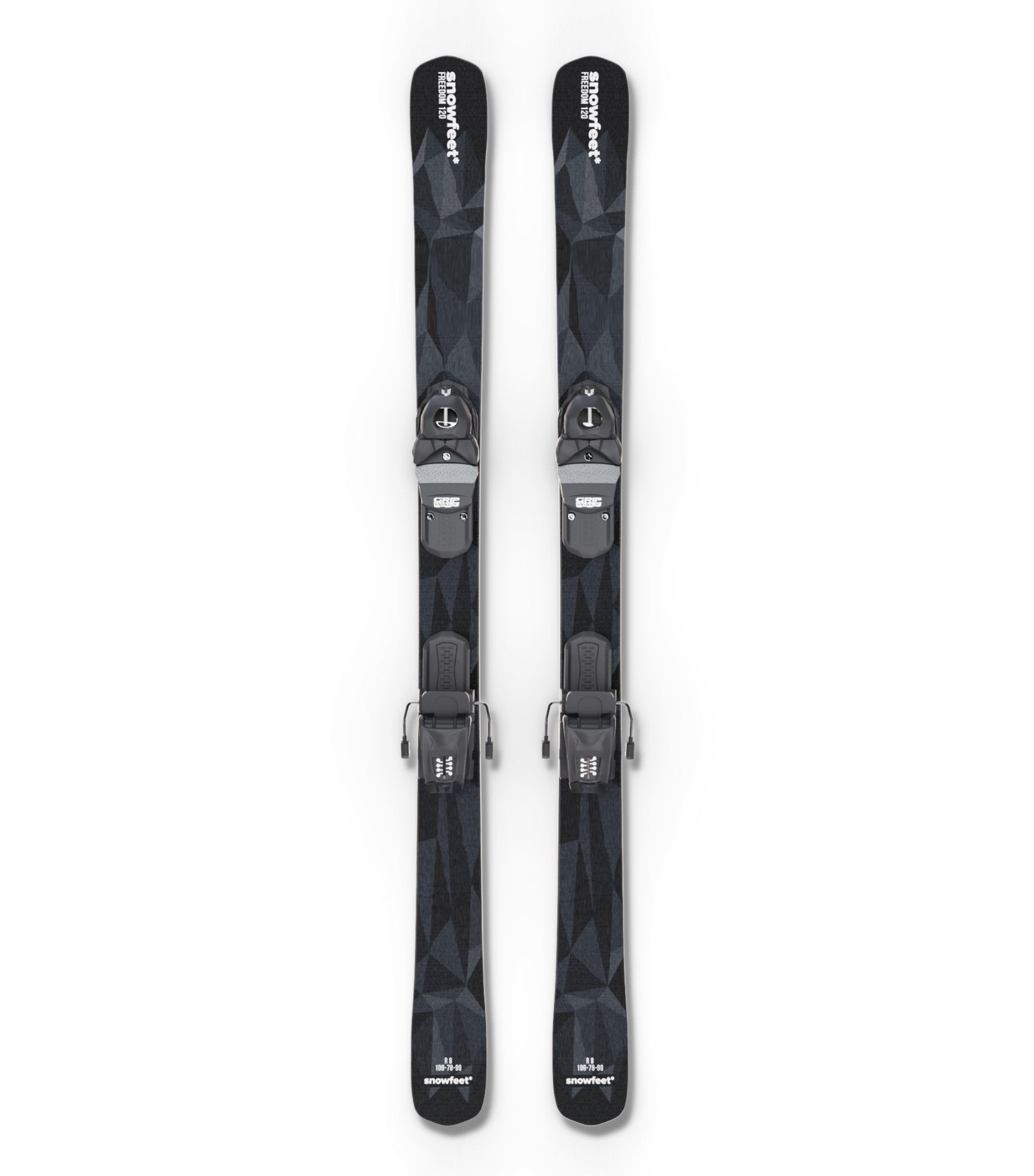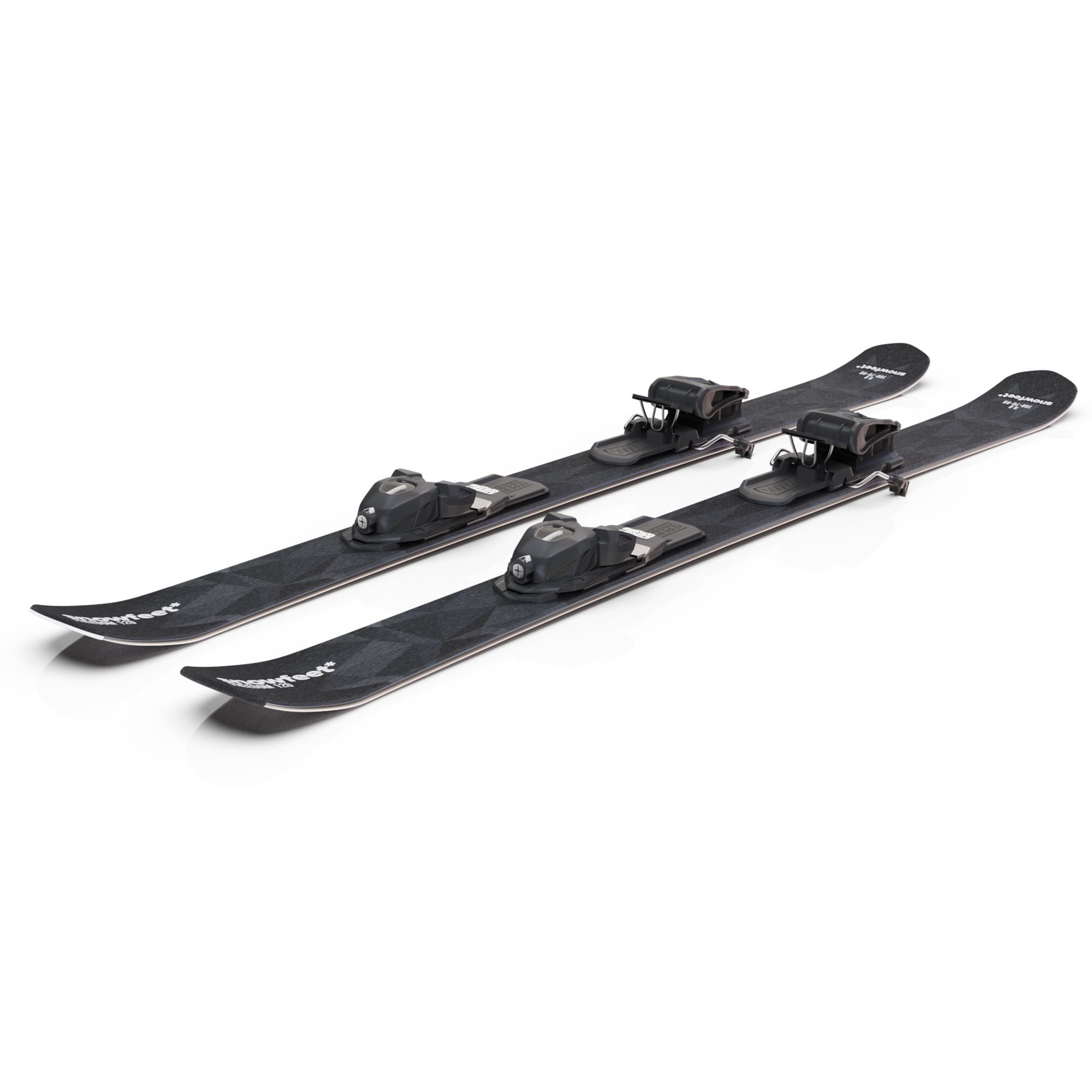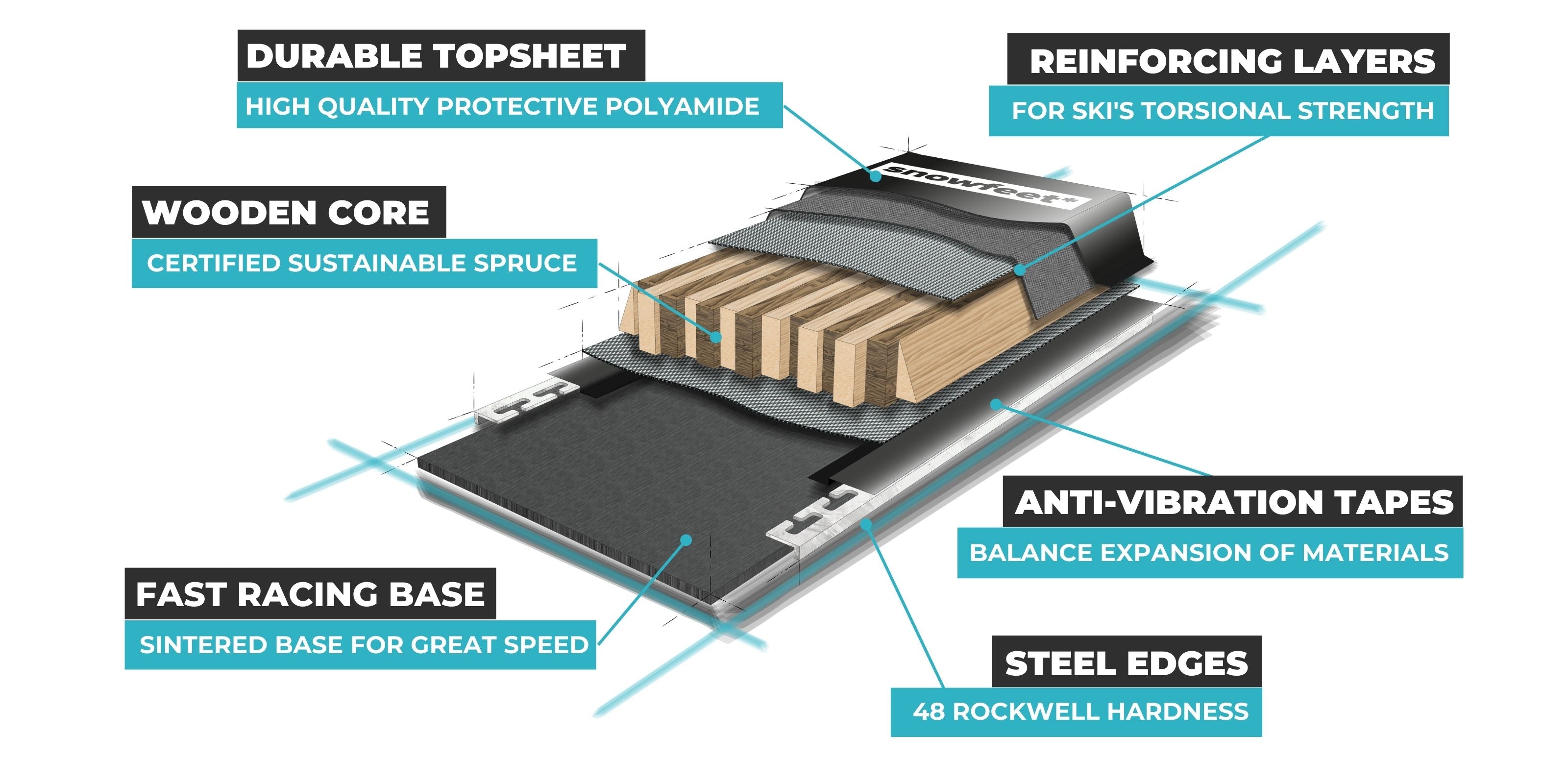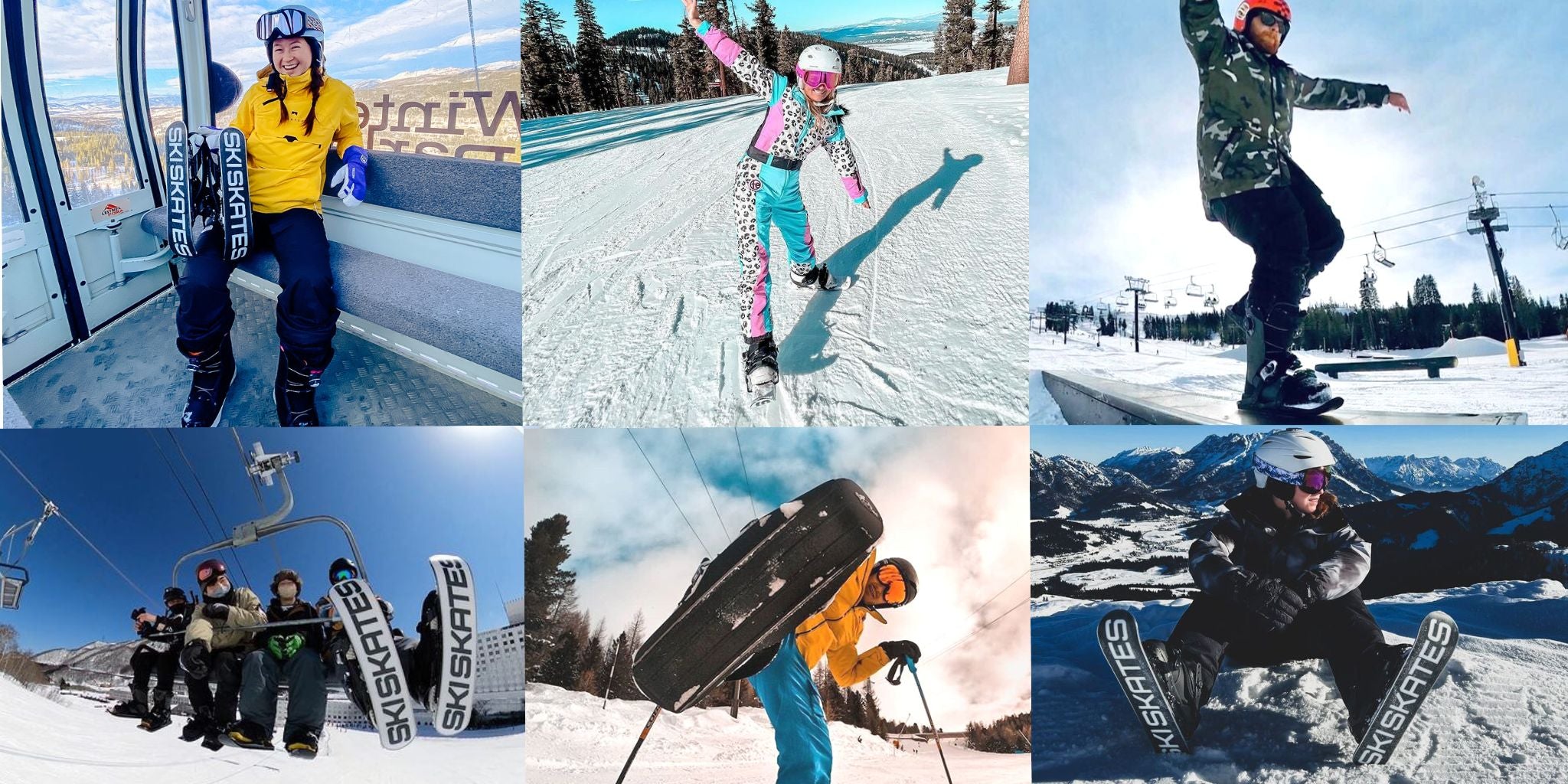SKIS FOR BEGINNERS | SKIS FOR FIRST TIME SKIERS | SKIS FOR INTERMEDIATE SKIERS
BEST SKIS FOR BEGINNERS
New to skiing? Looking for your first pair of skis and not sure which skis to pick? Don't worry! Our guide will help you choose the right skis easily so you can spend less time shopping and more time skiing!
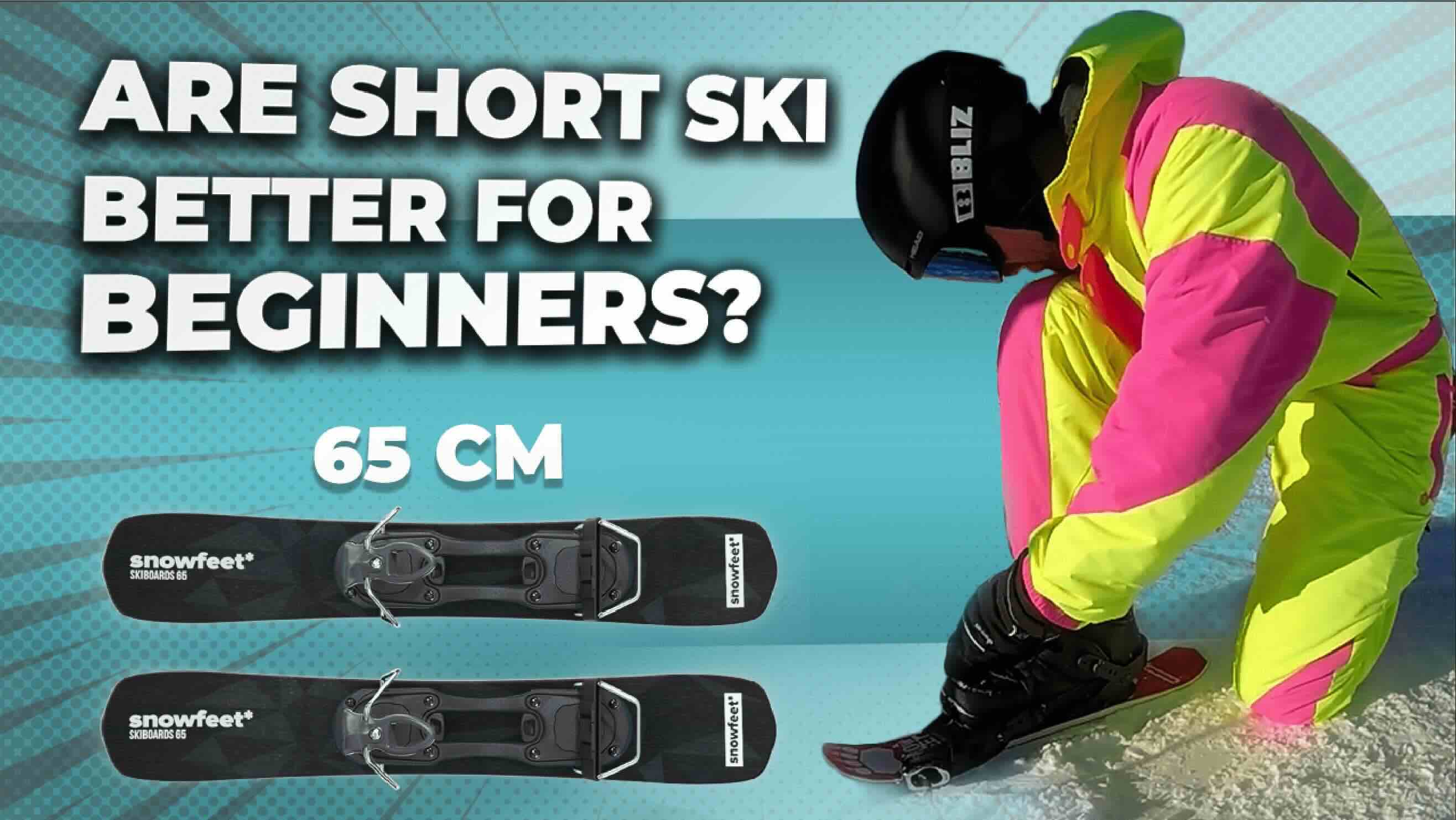




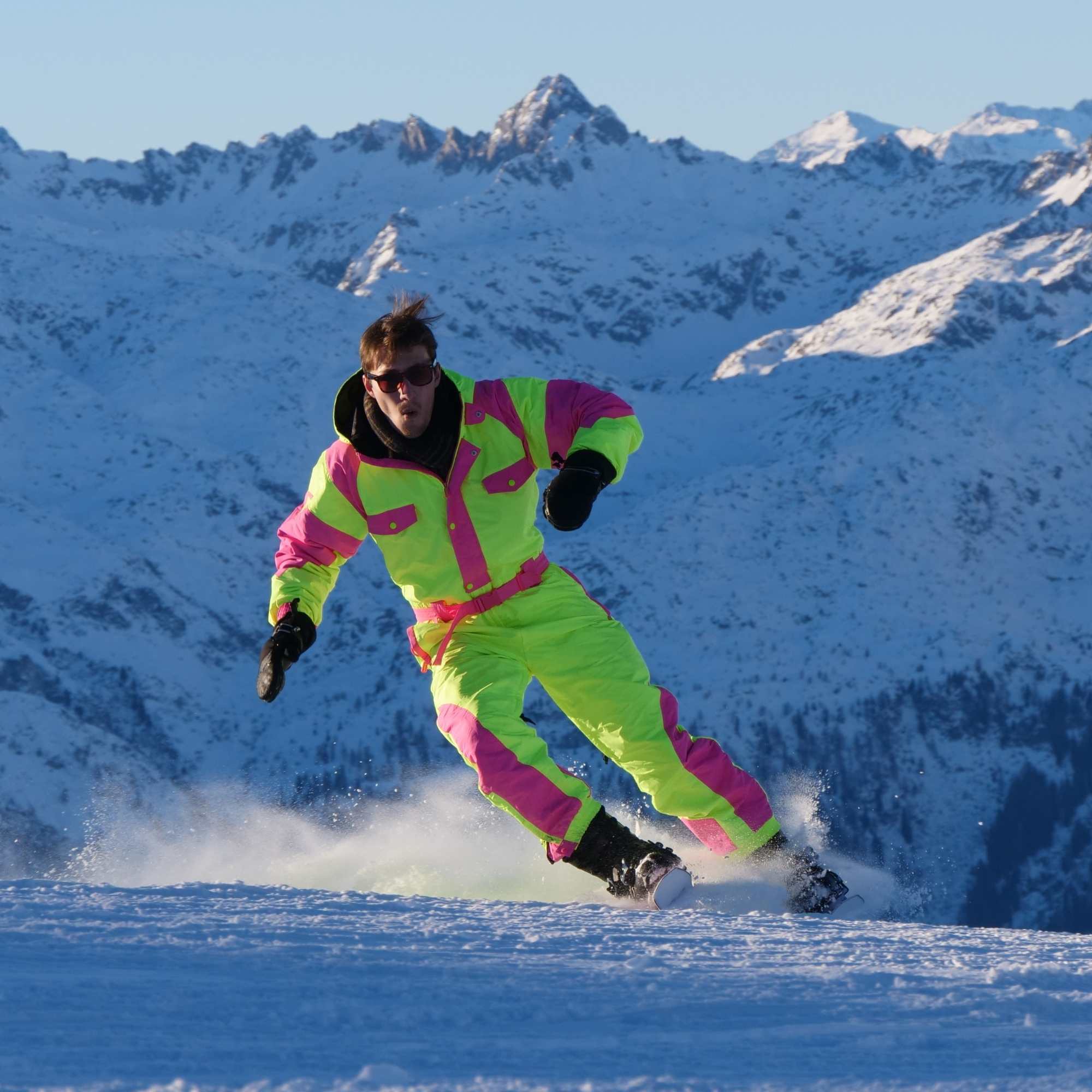
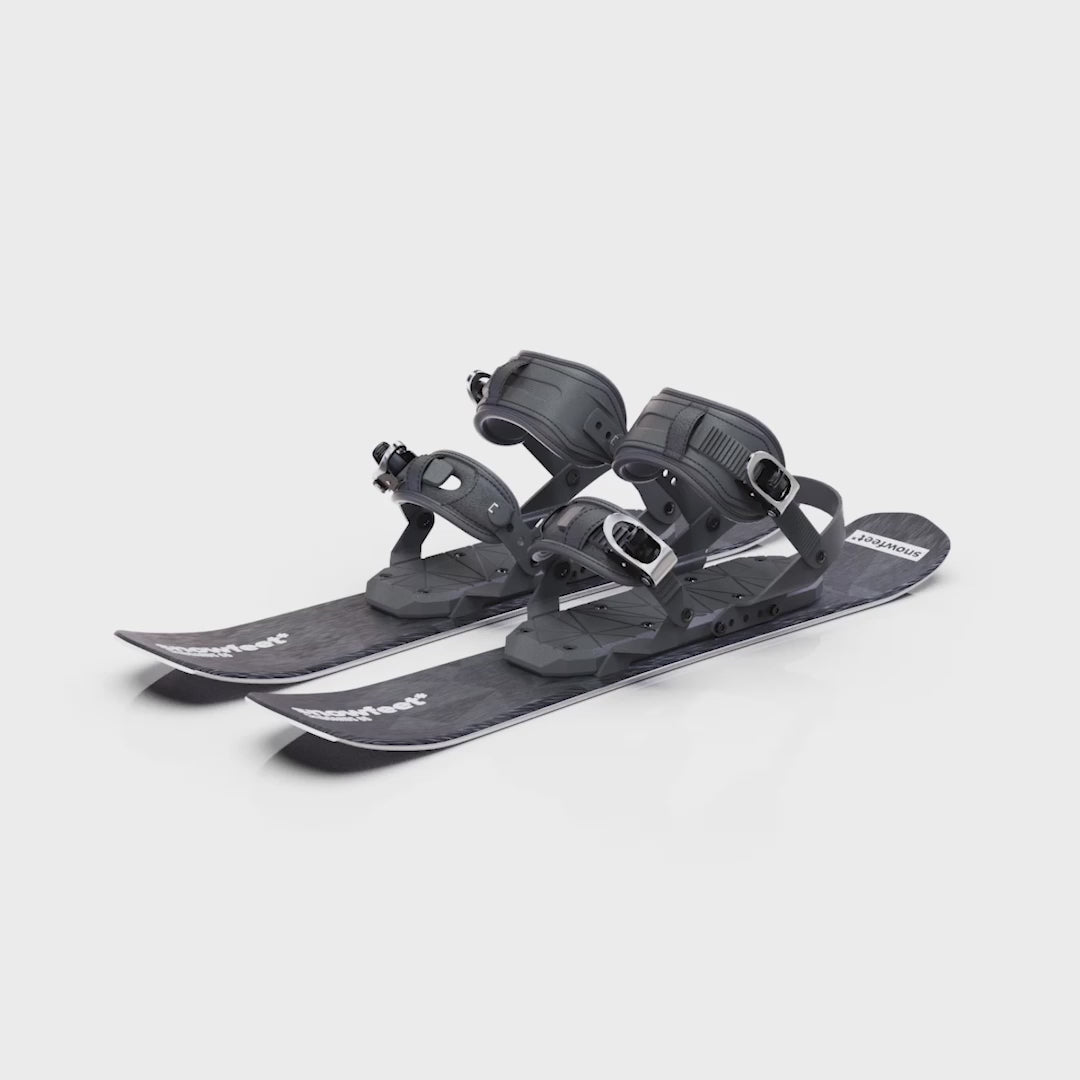
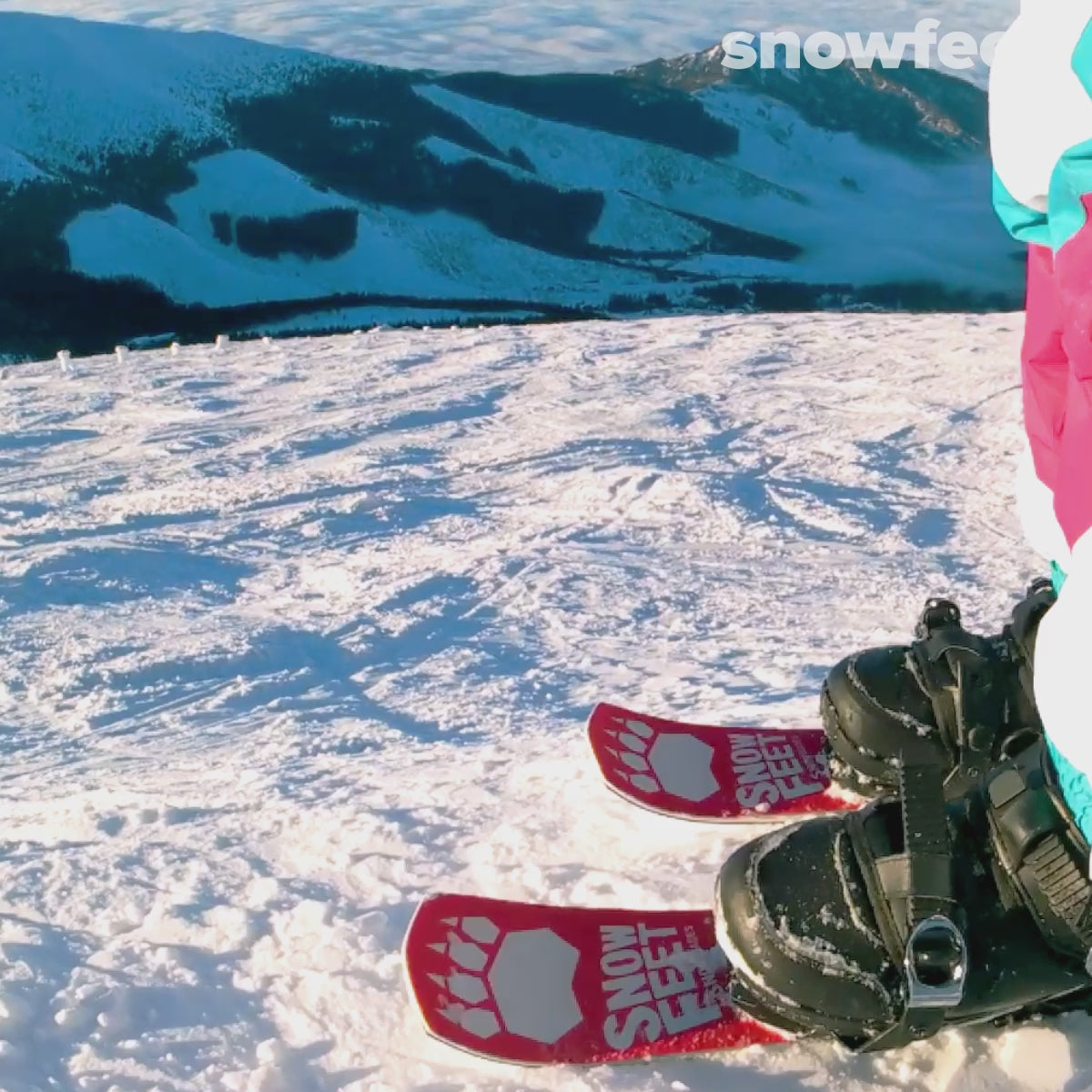

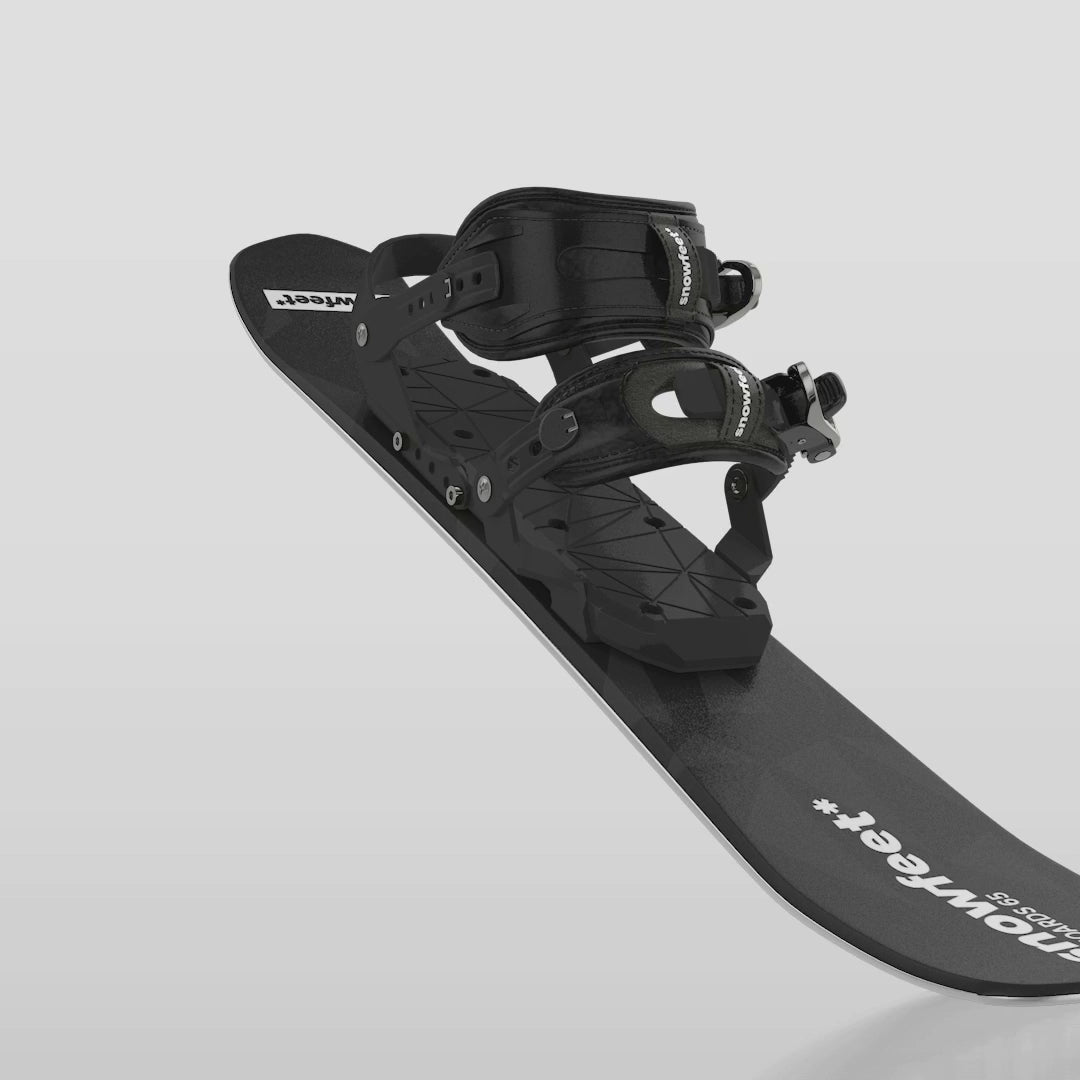
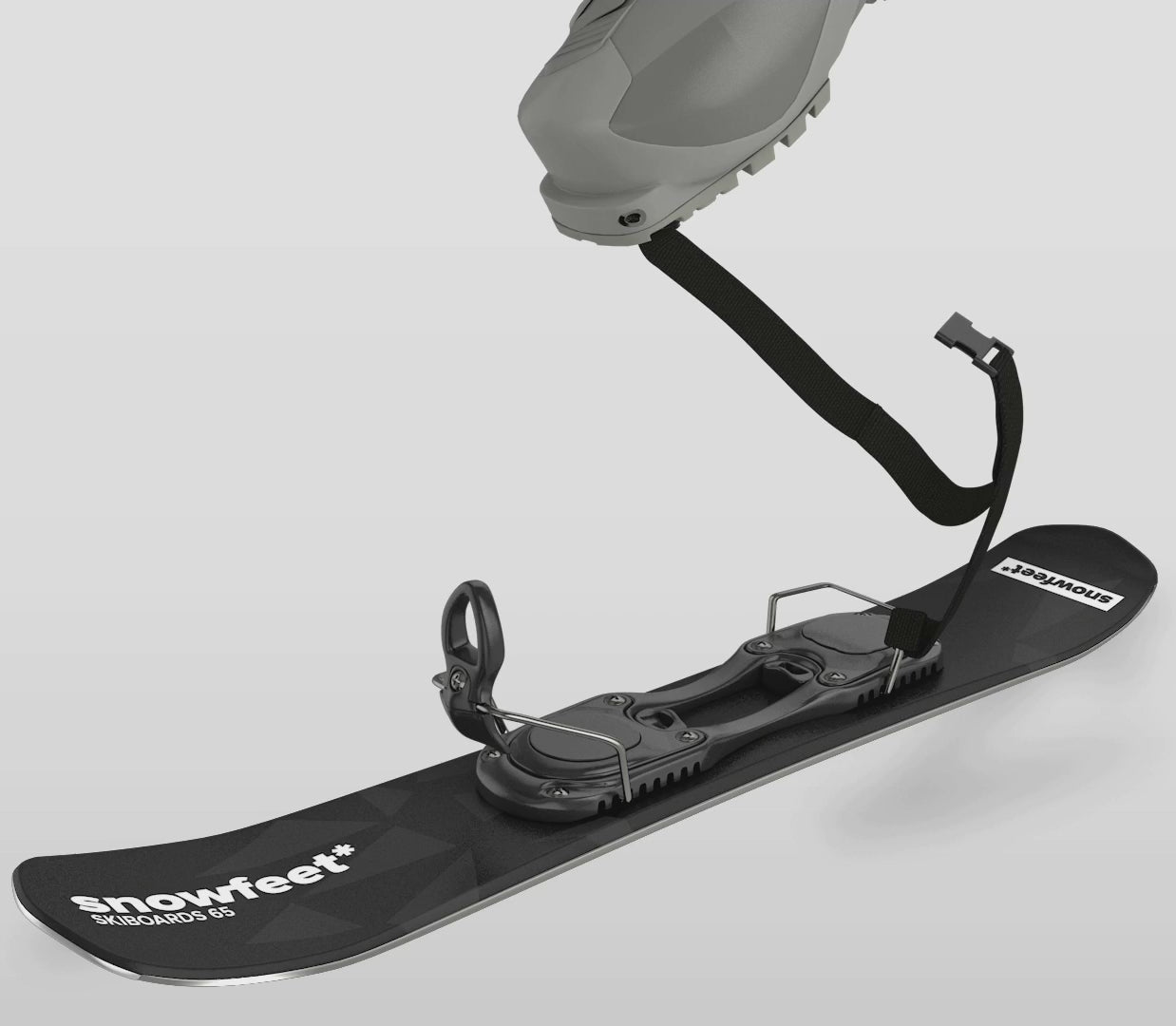

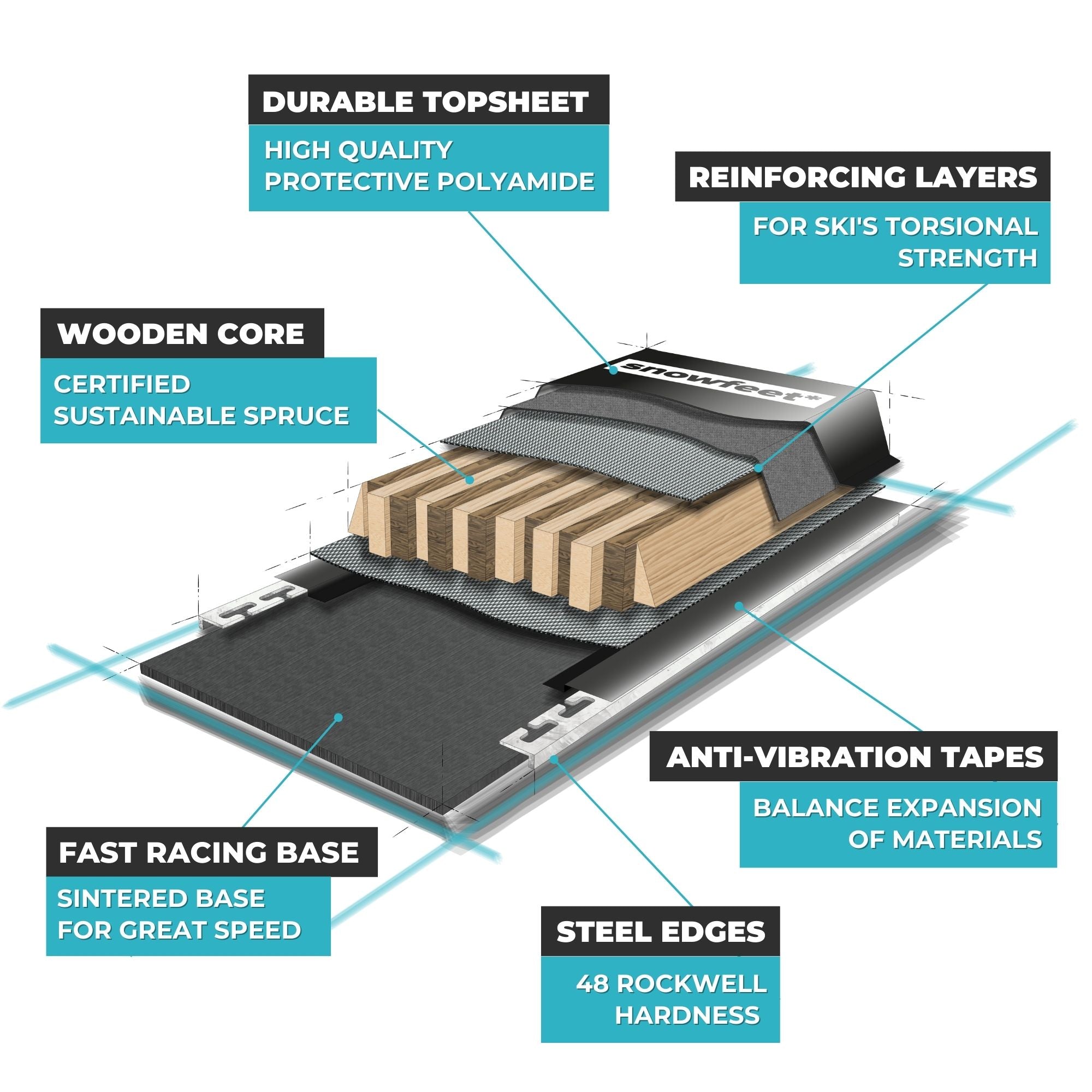


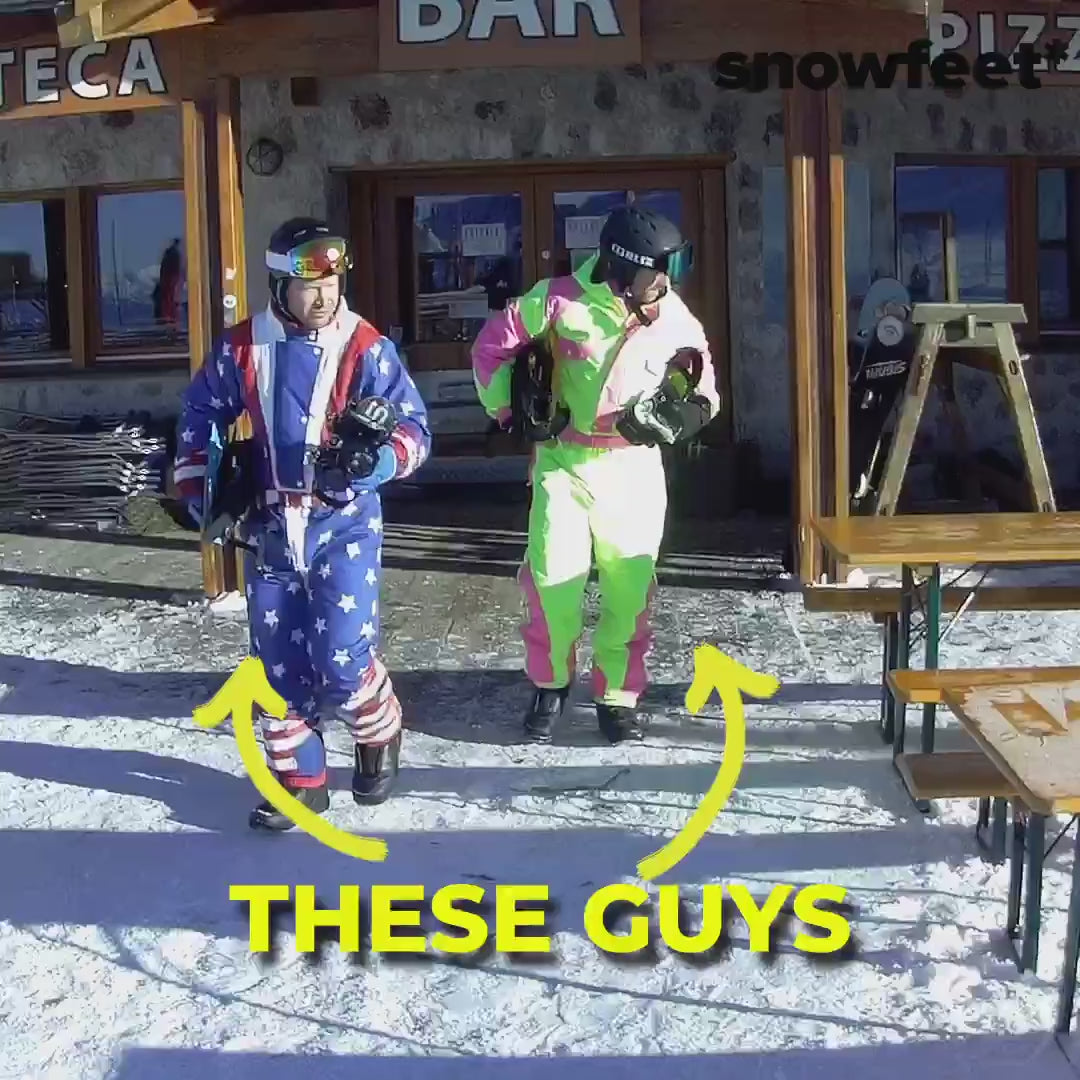

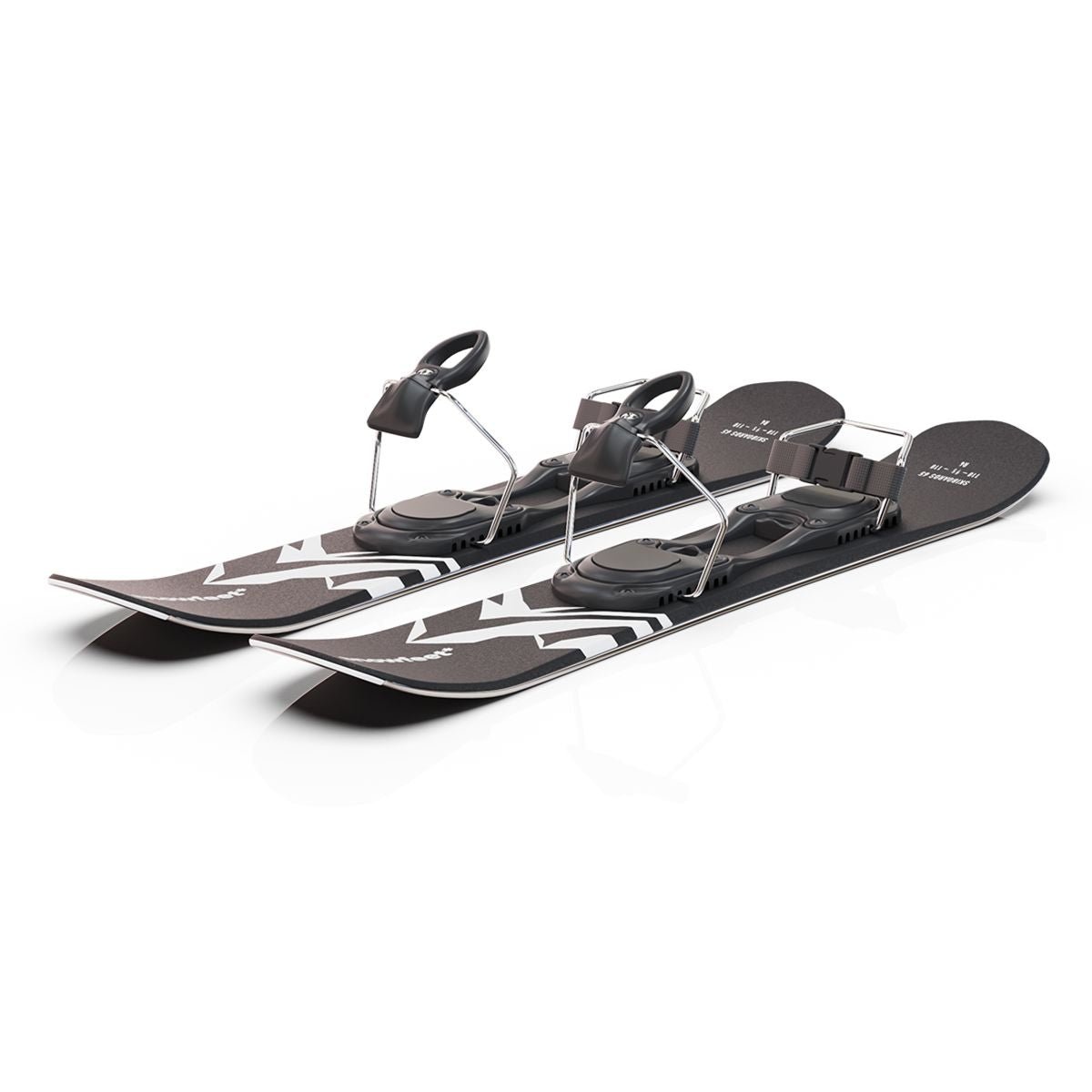























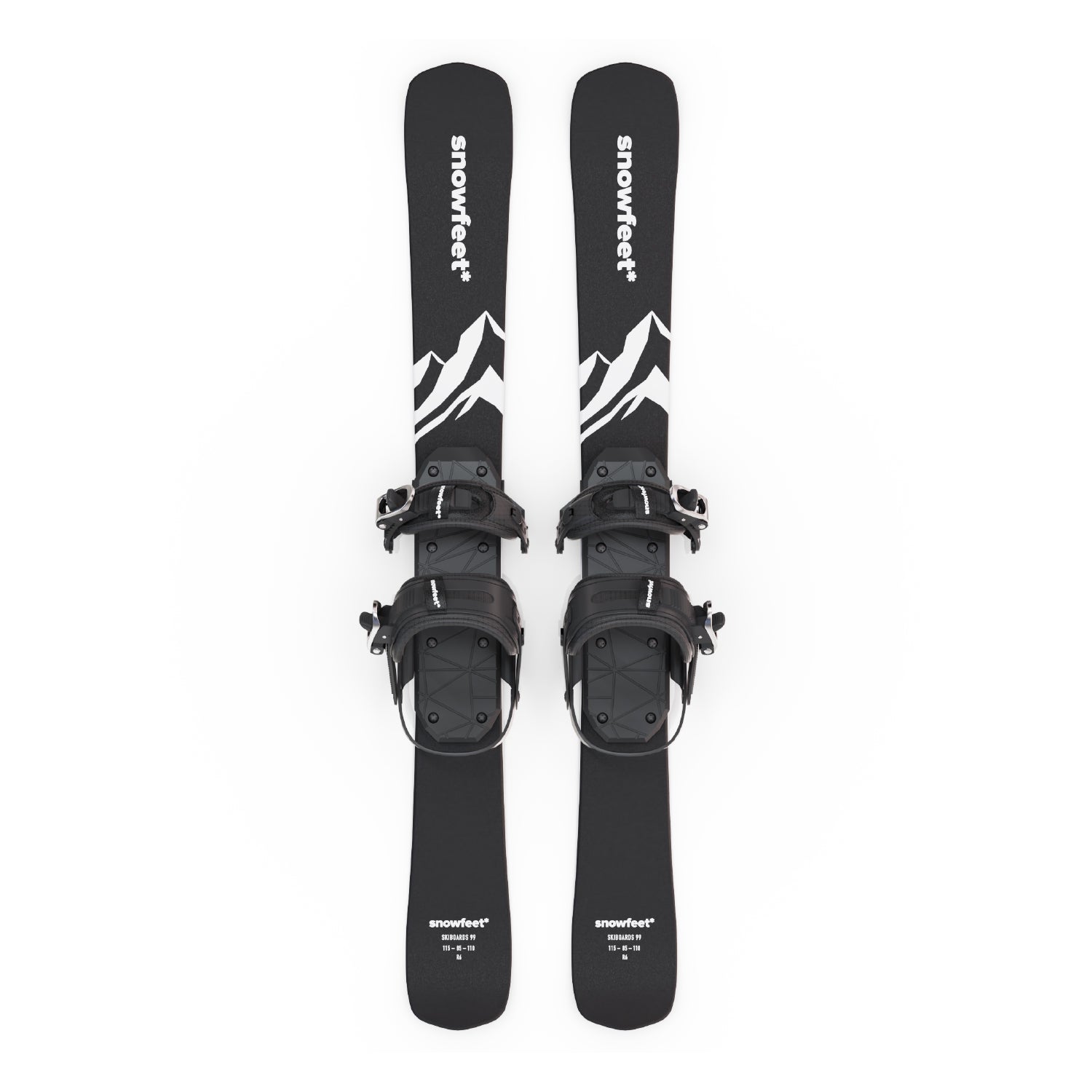





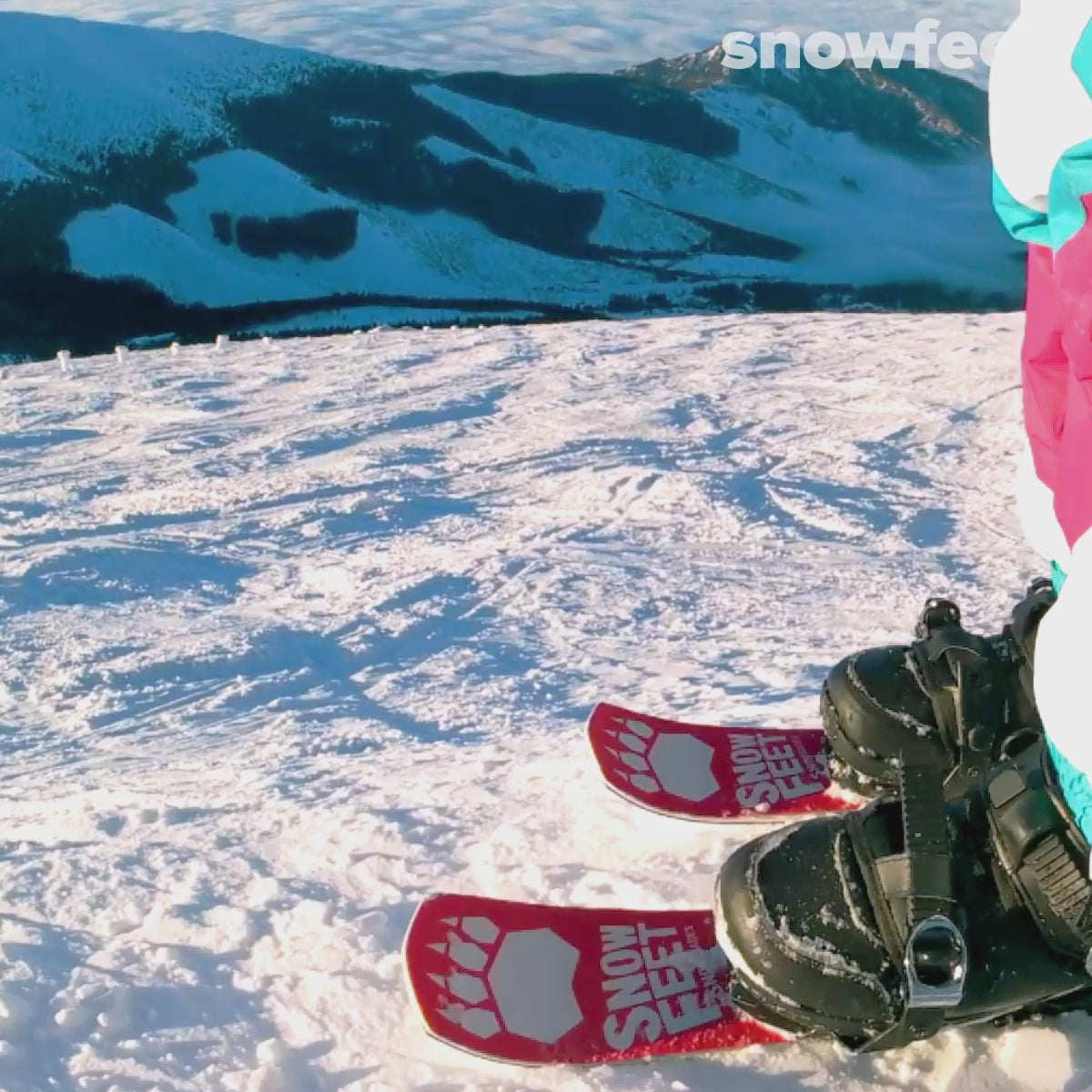
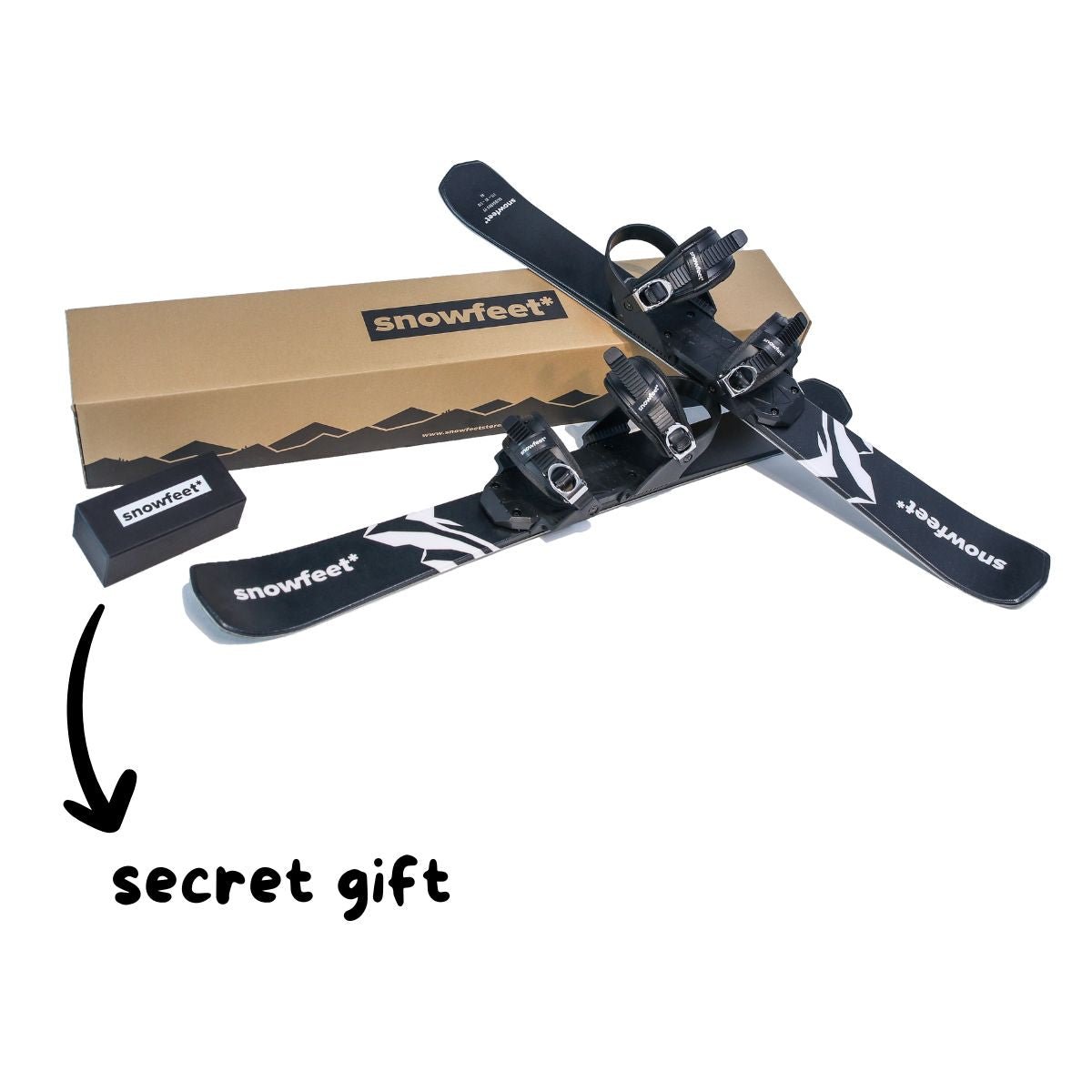

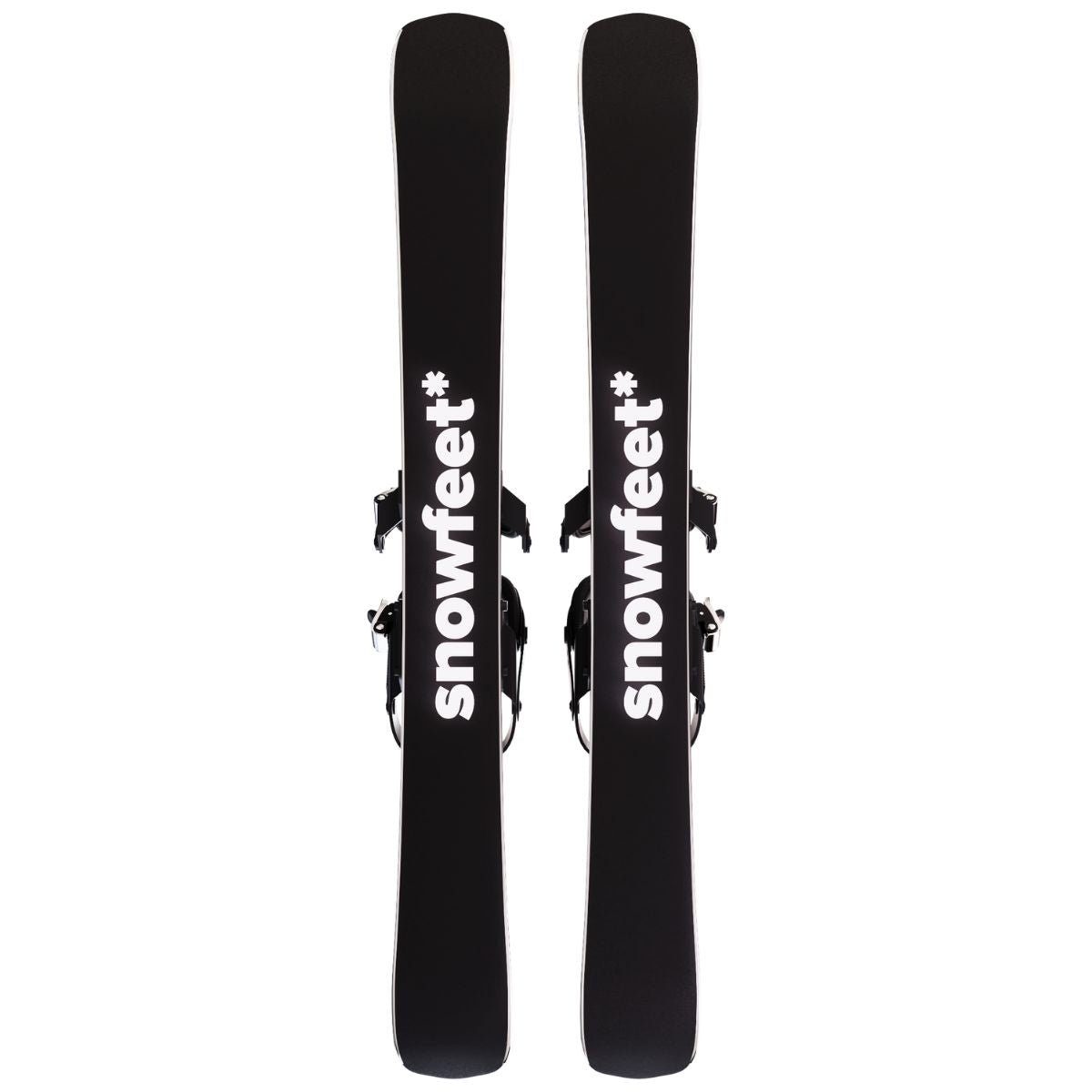
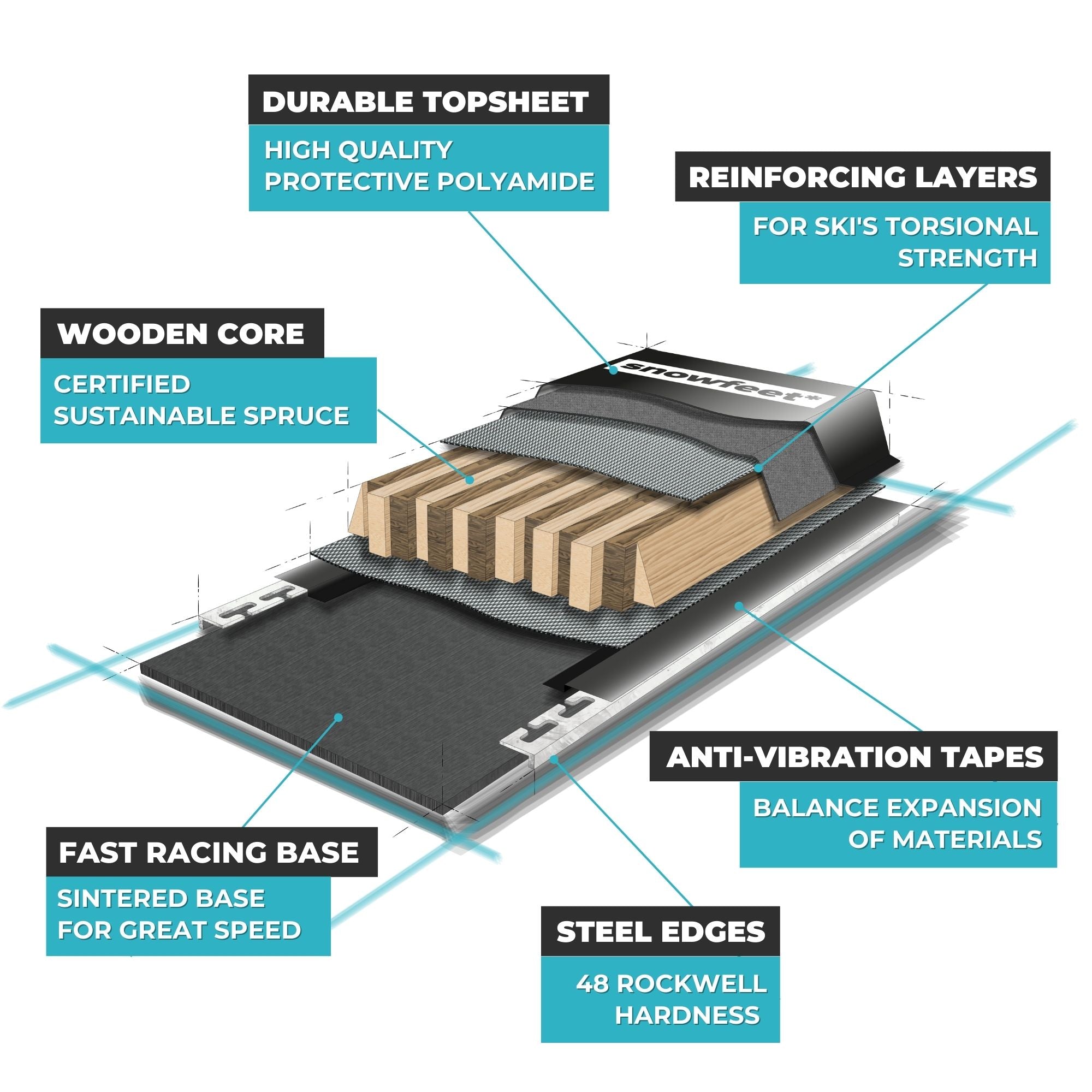

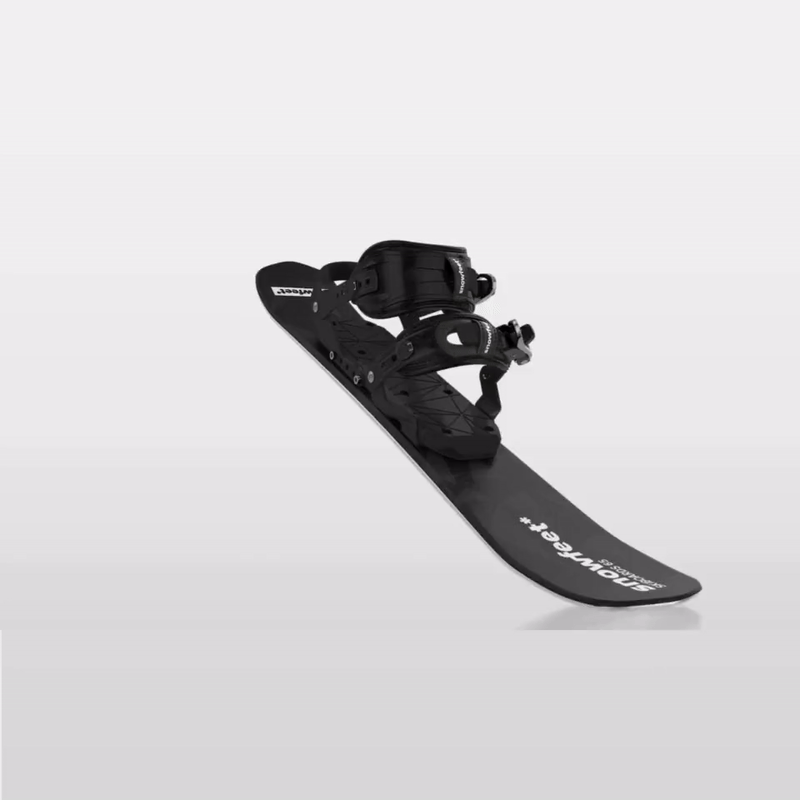
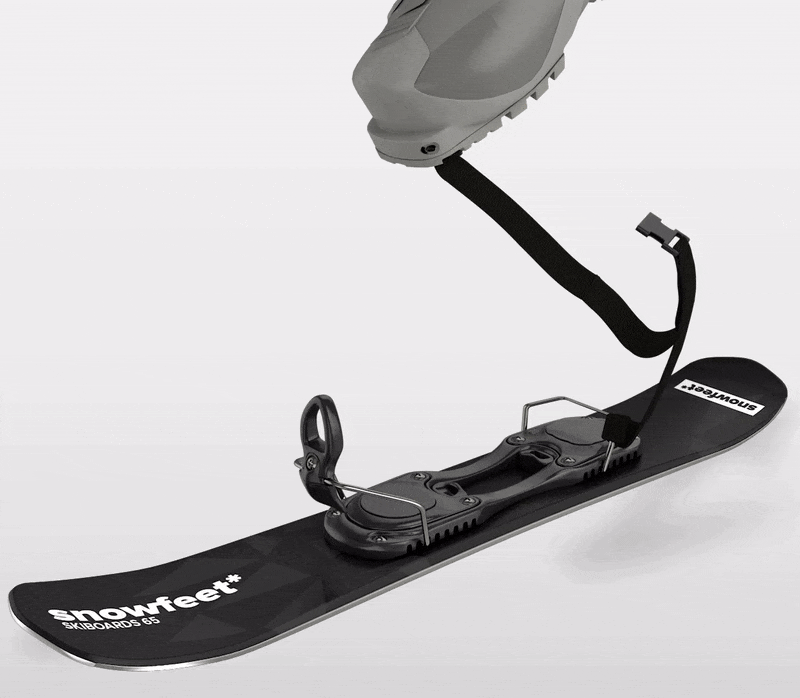
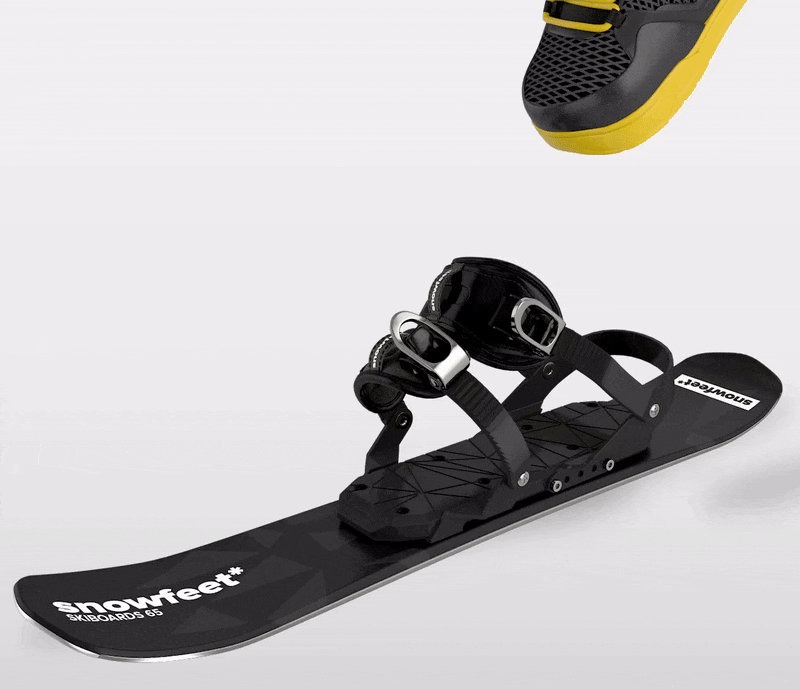
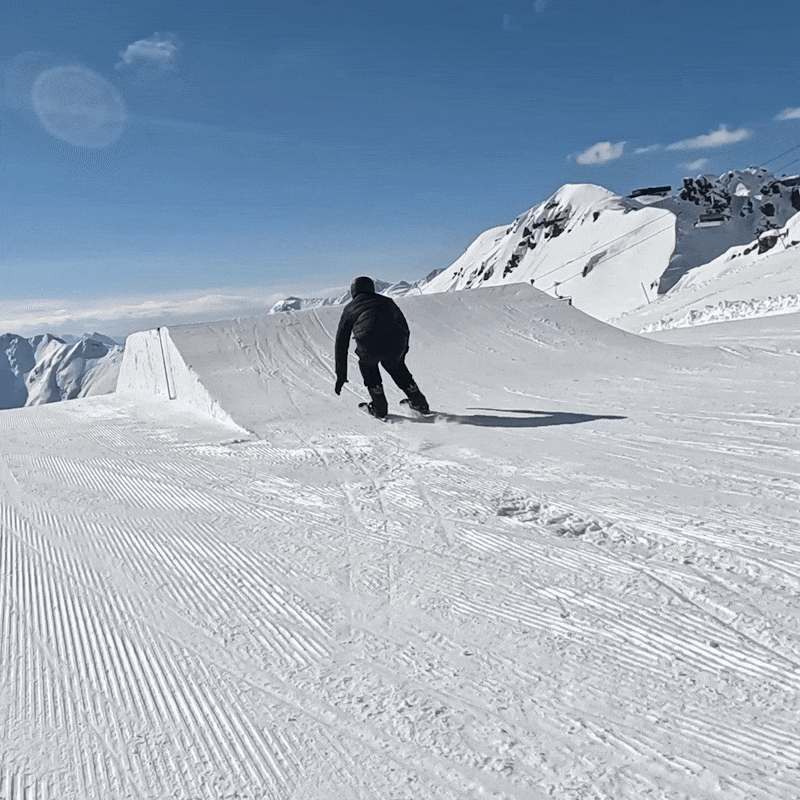




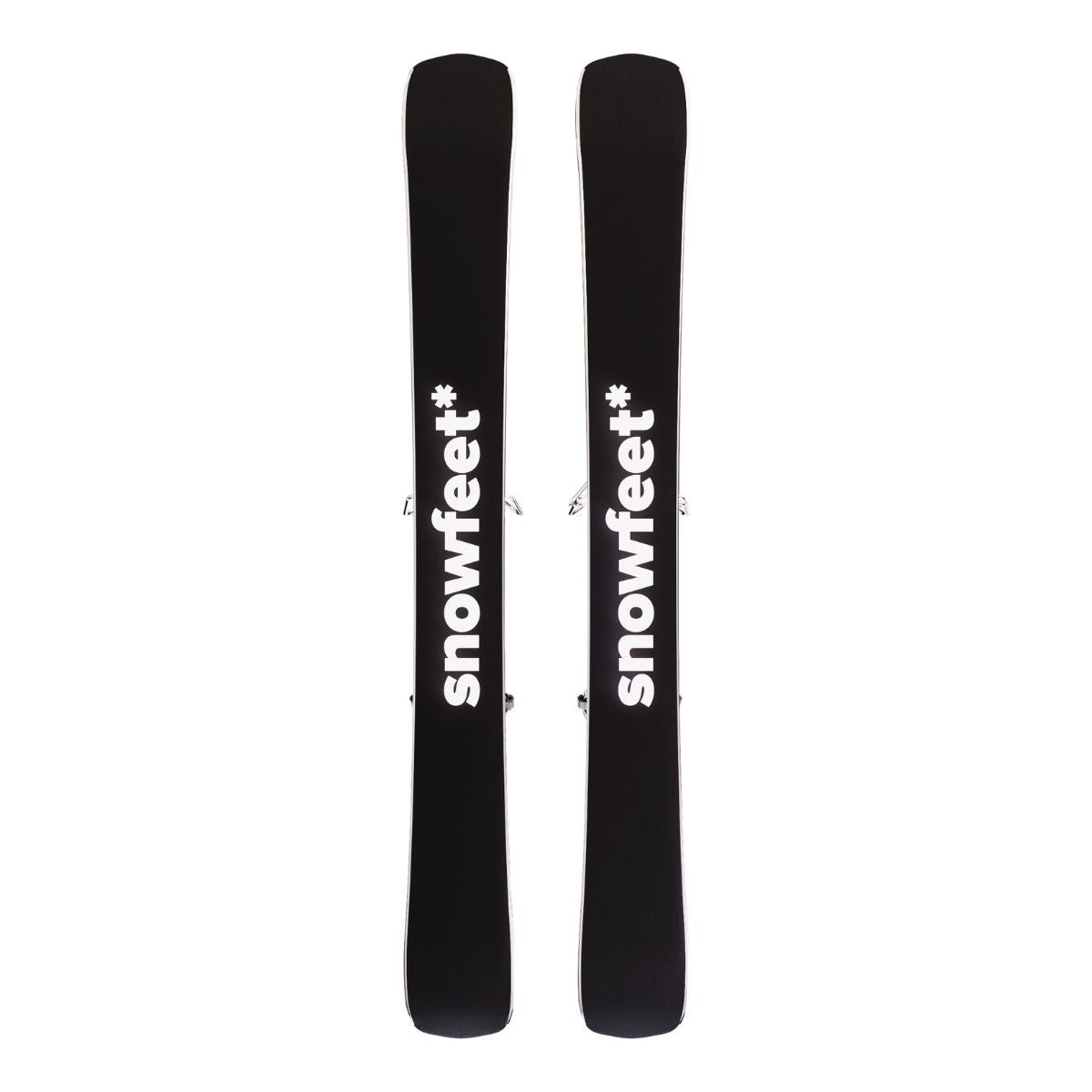


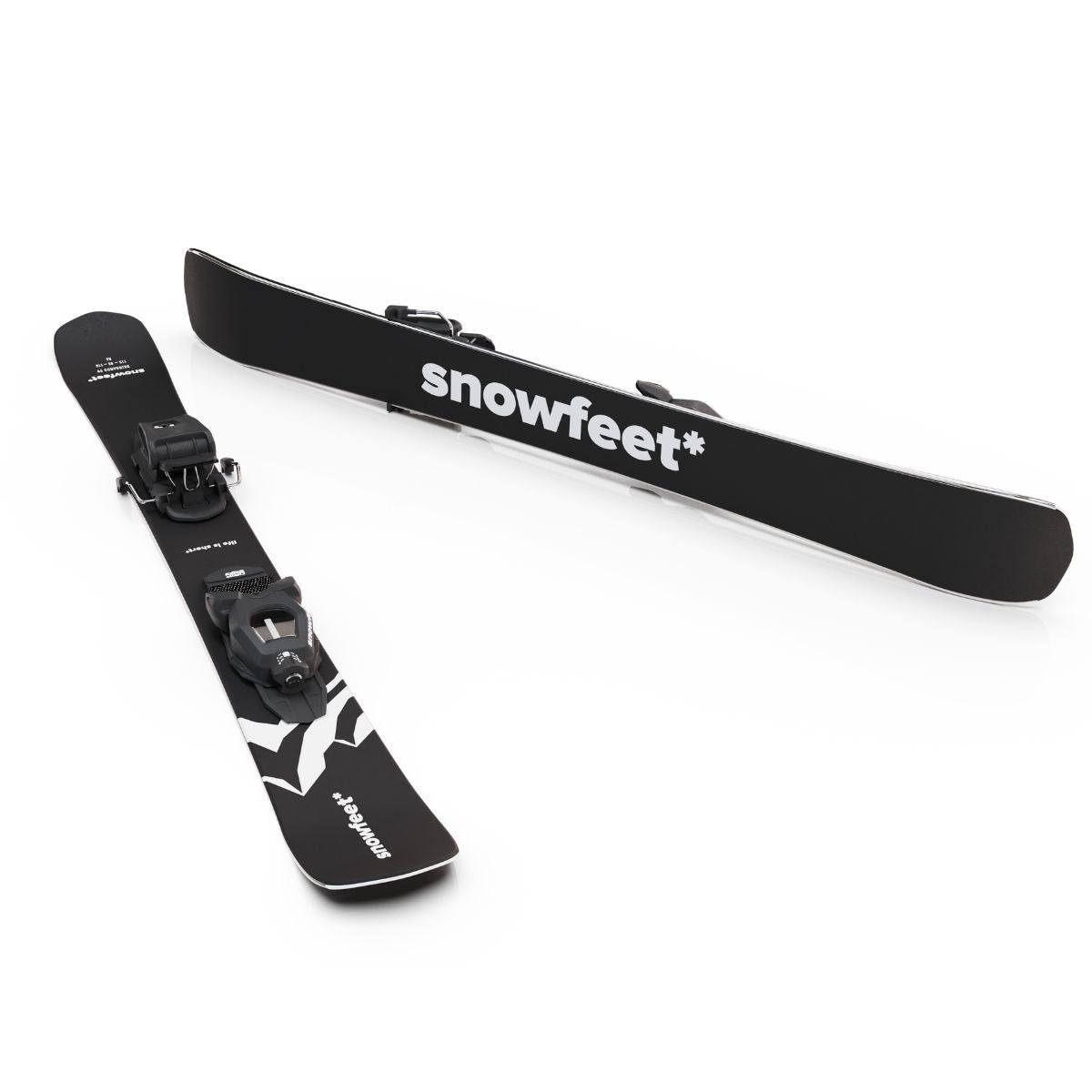
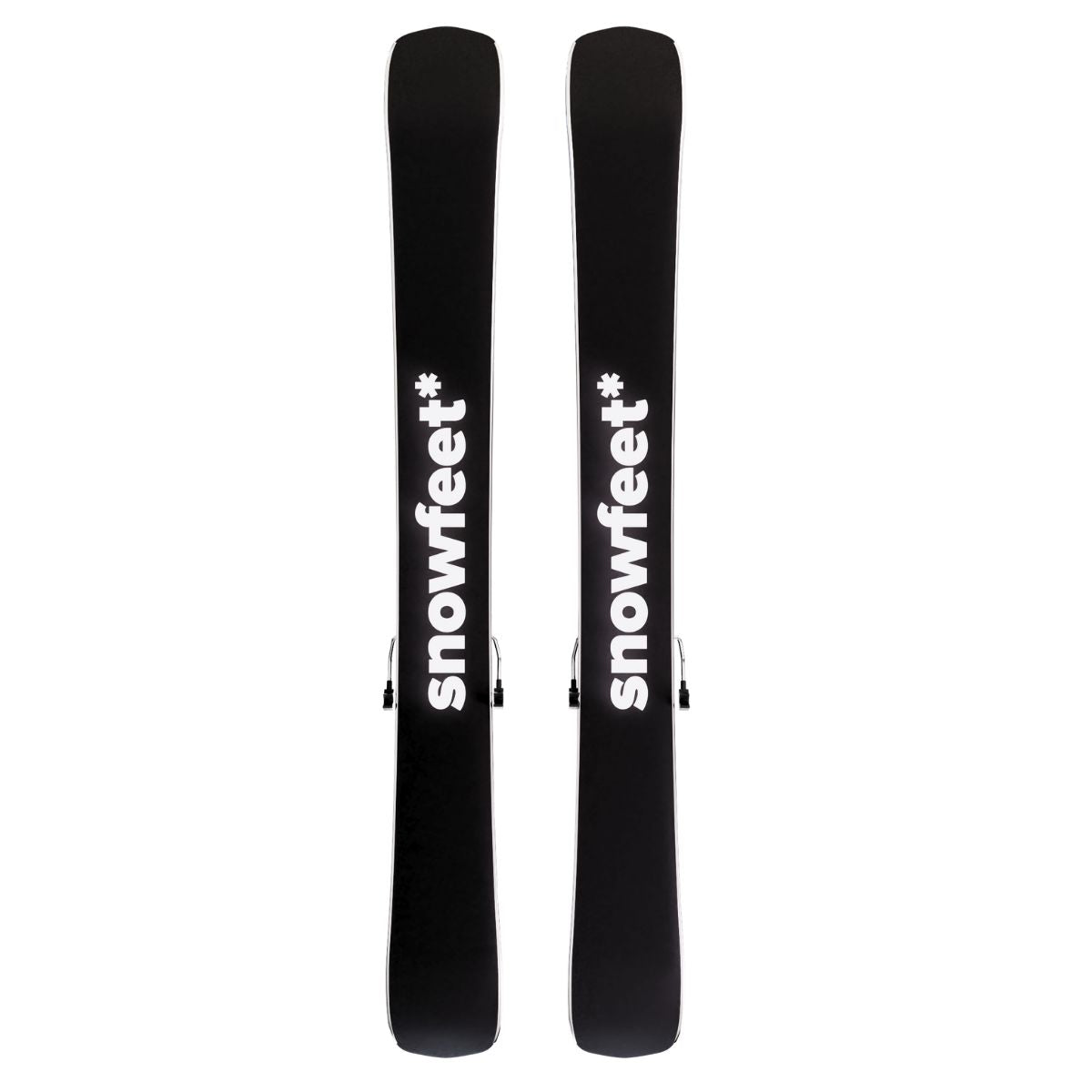


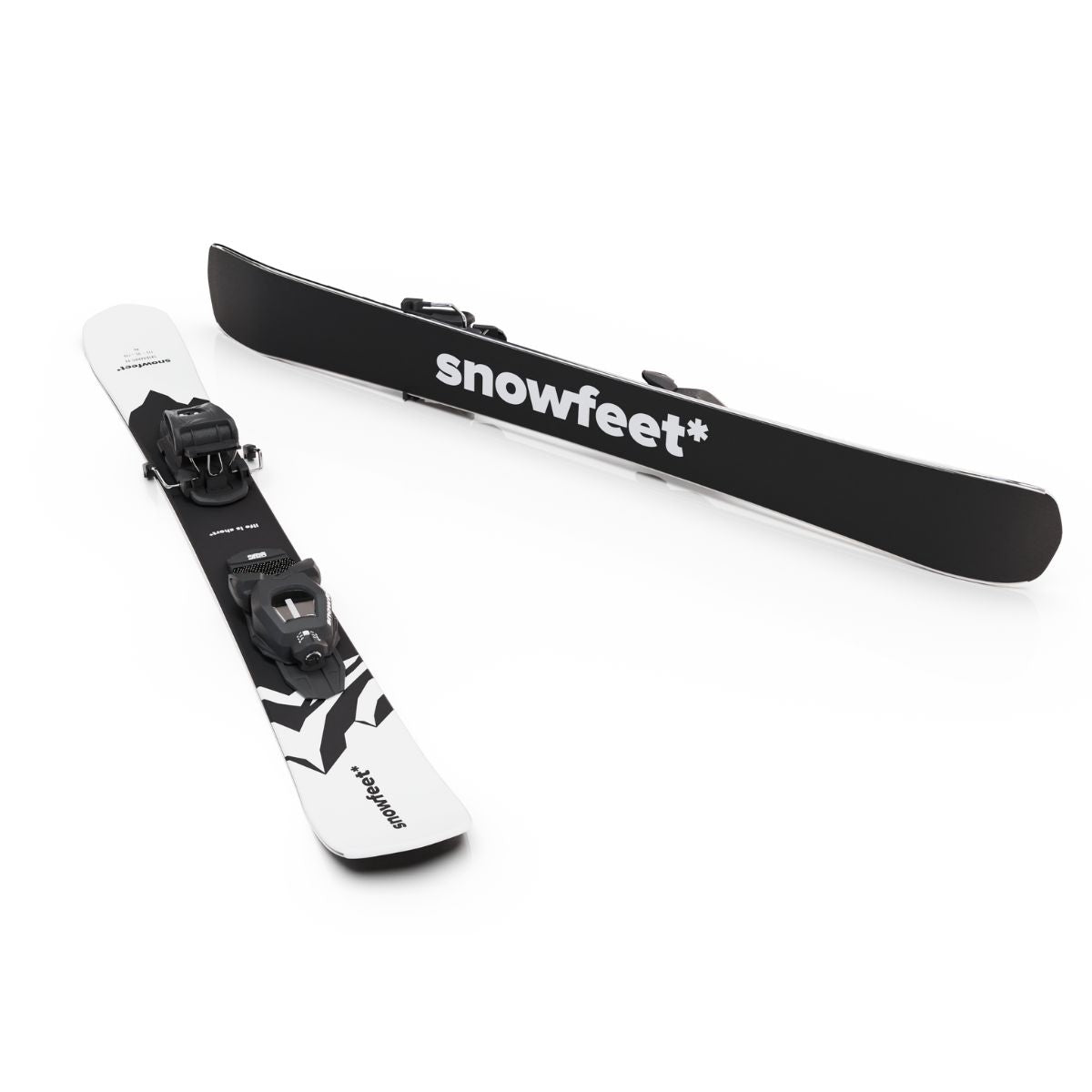







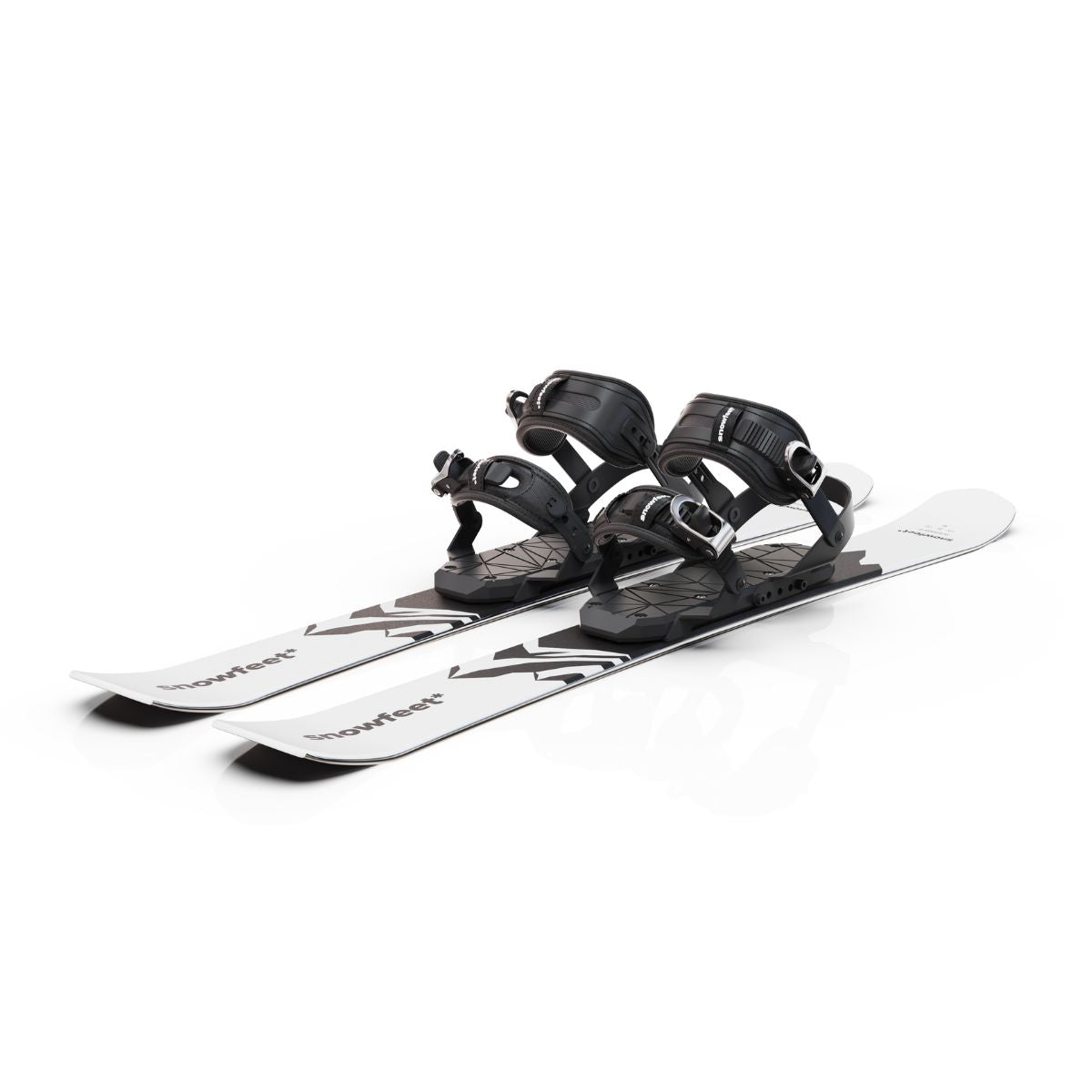






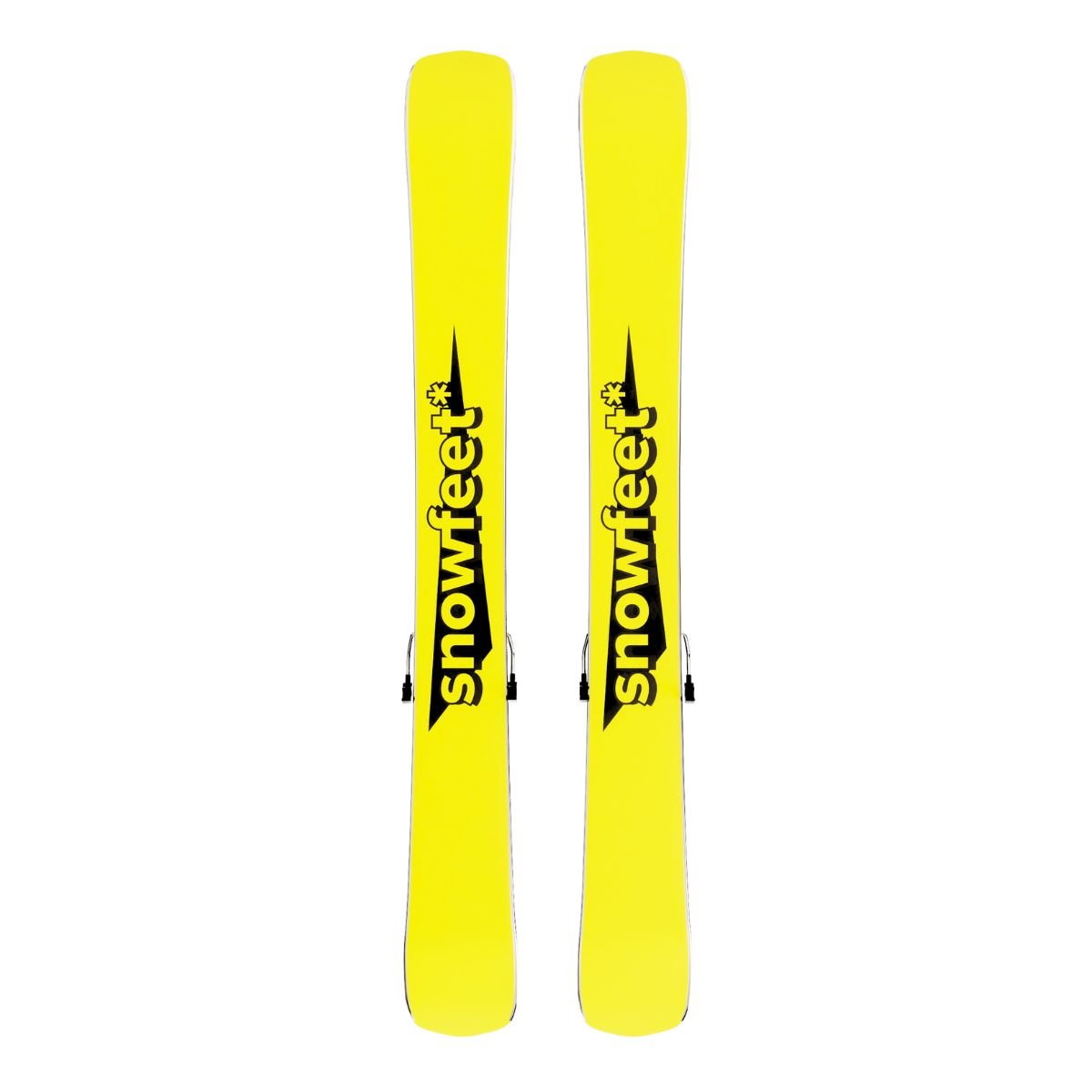










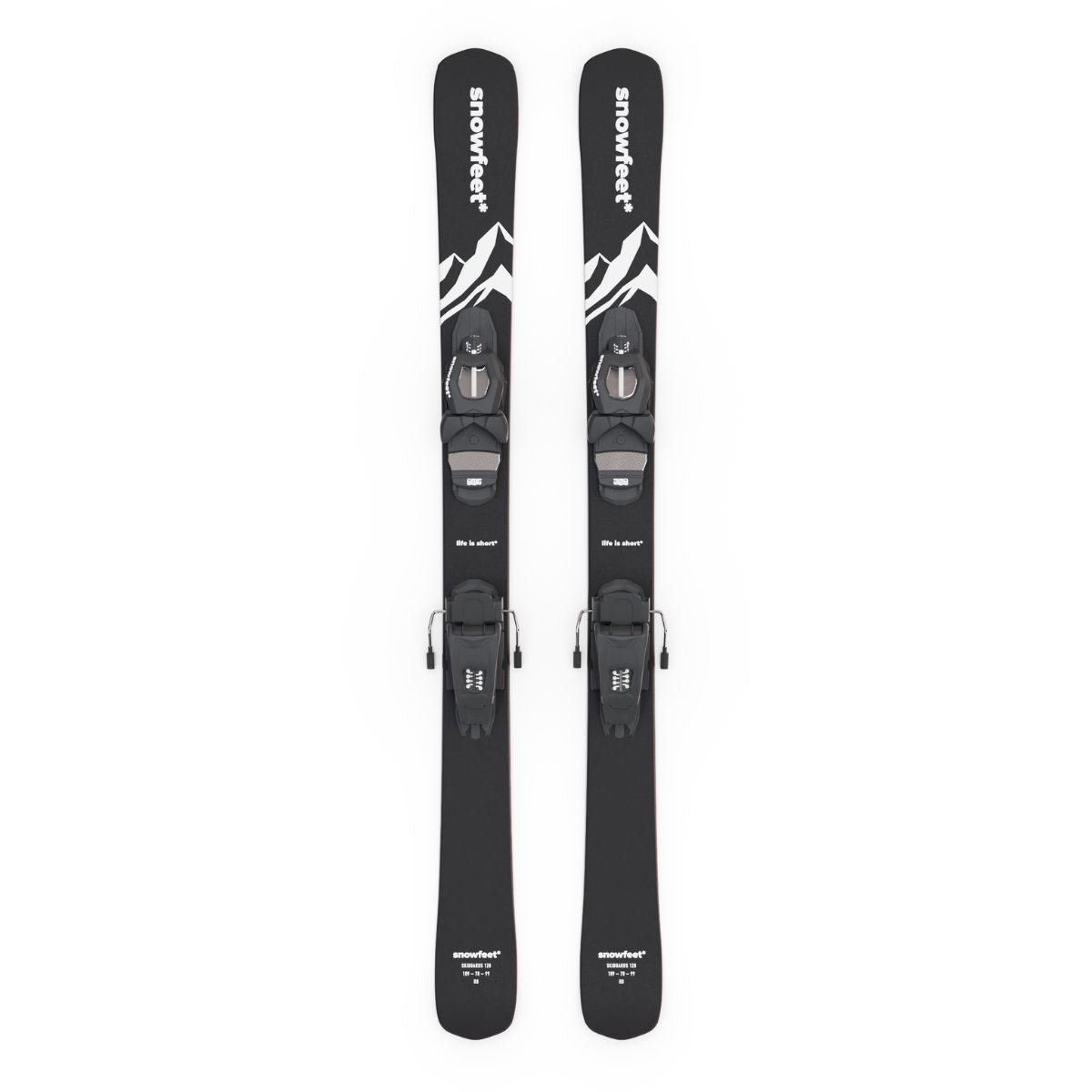
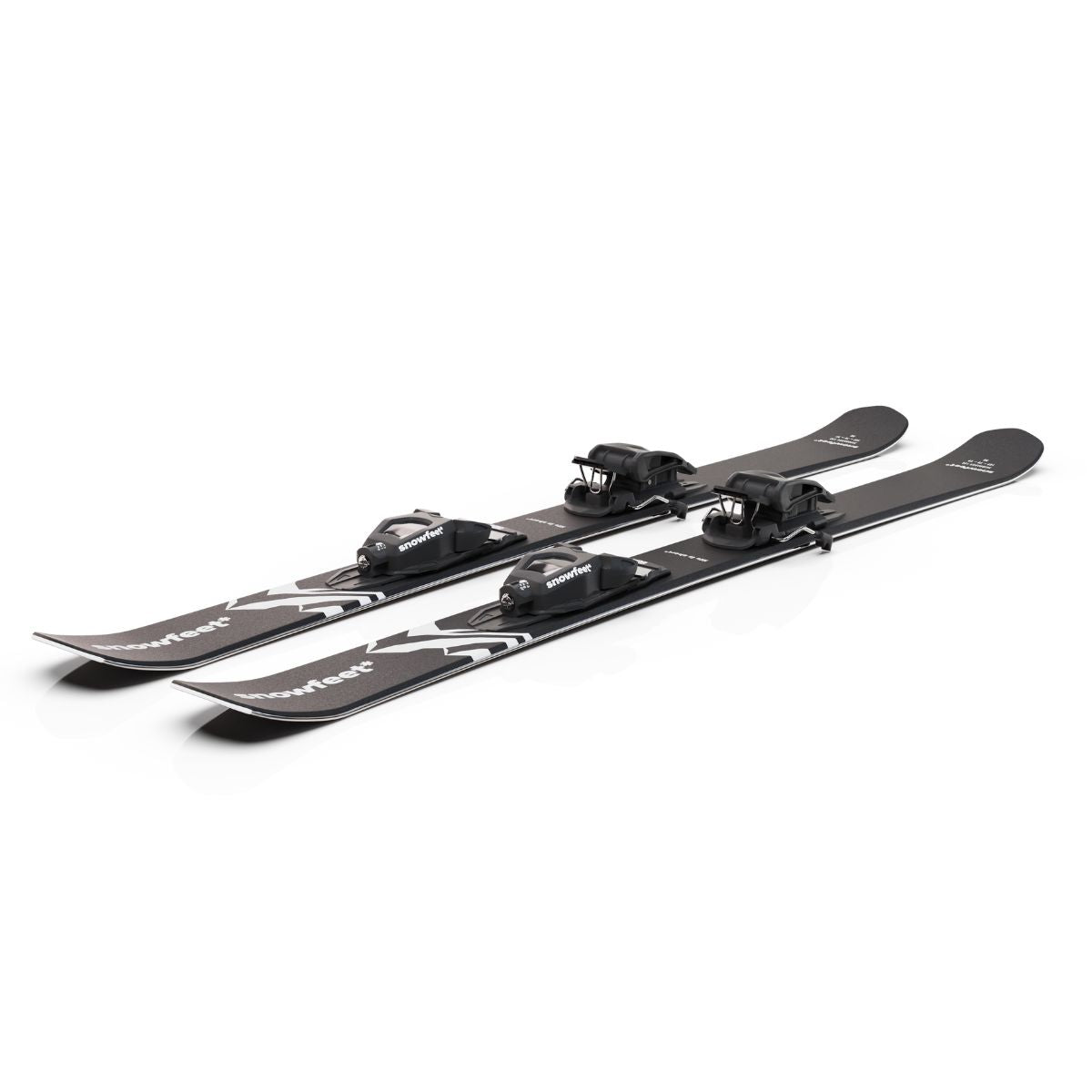
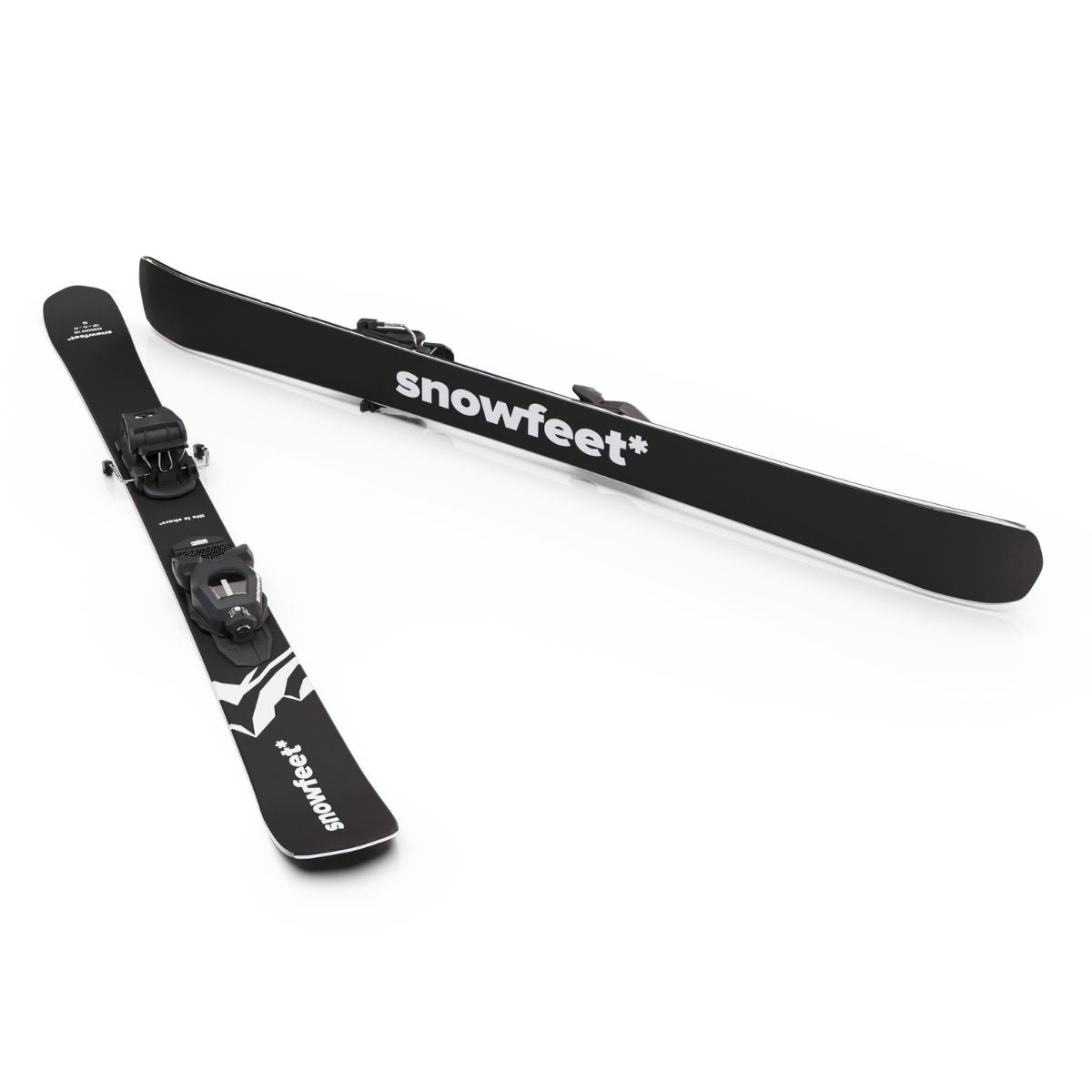


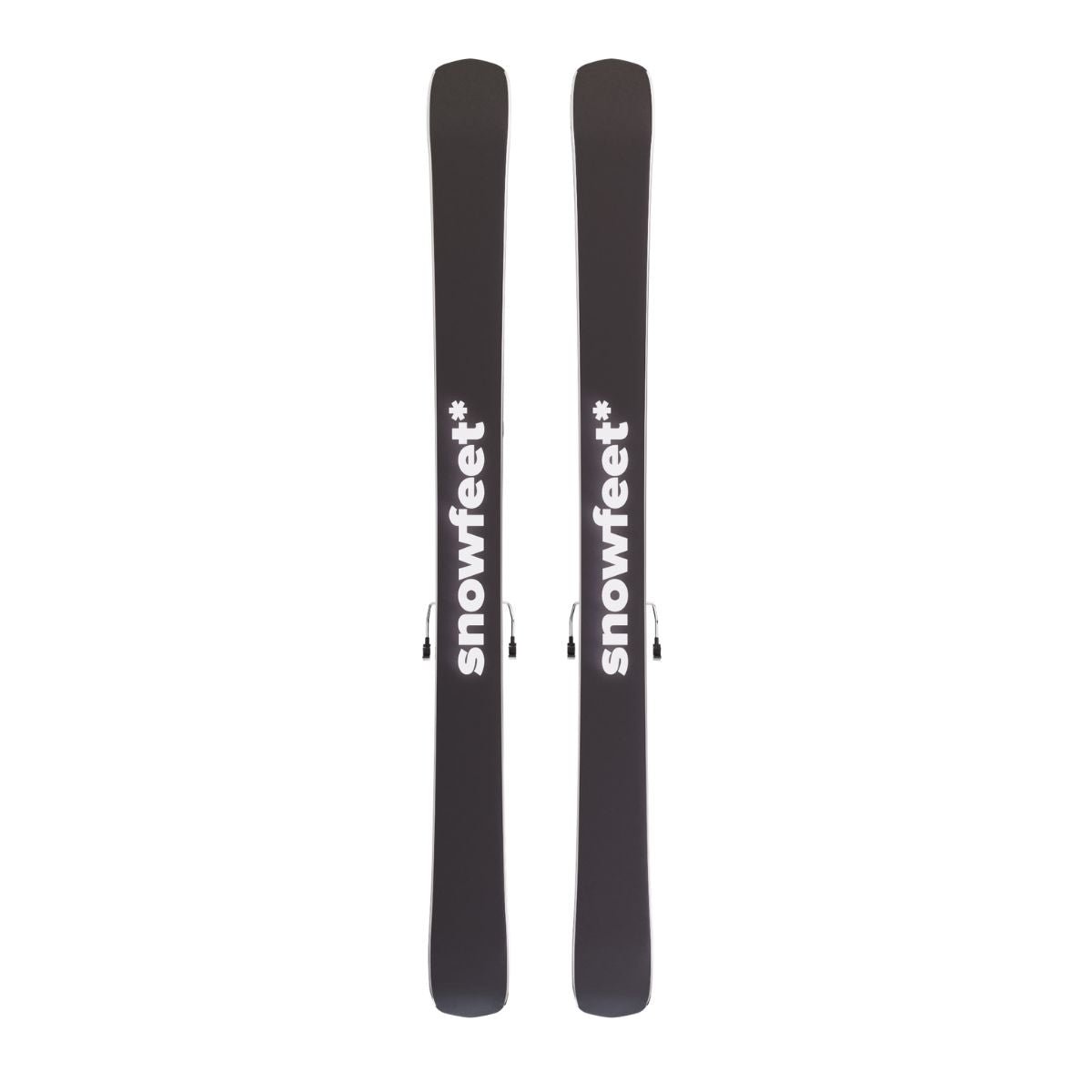



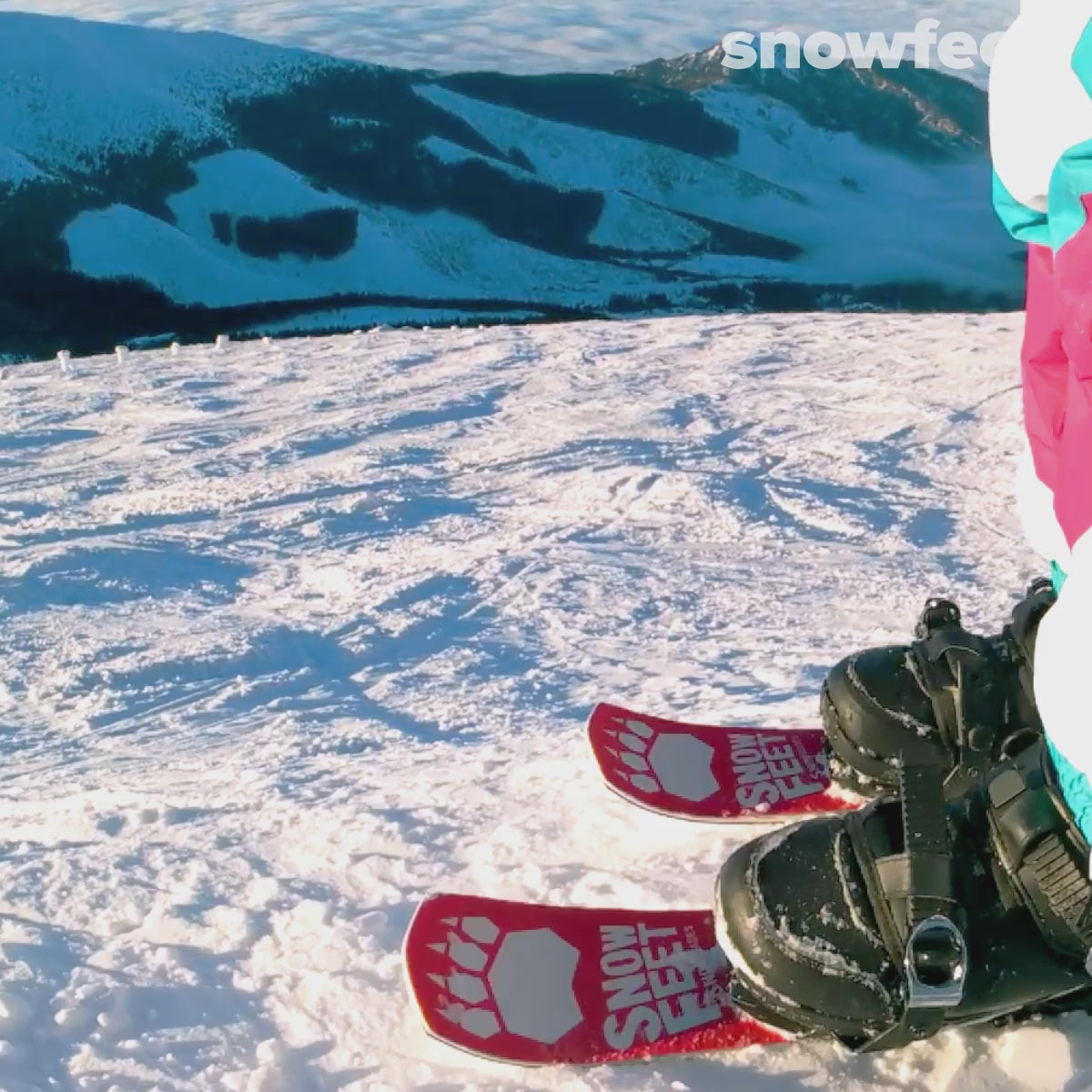
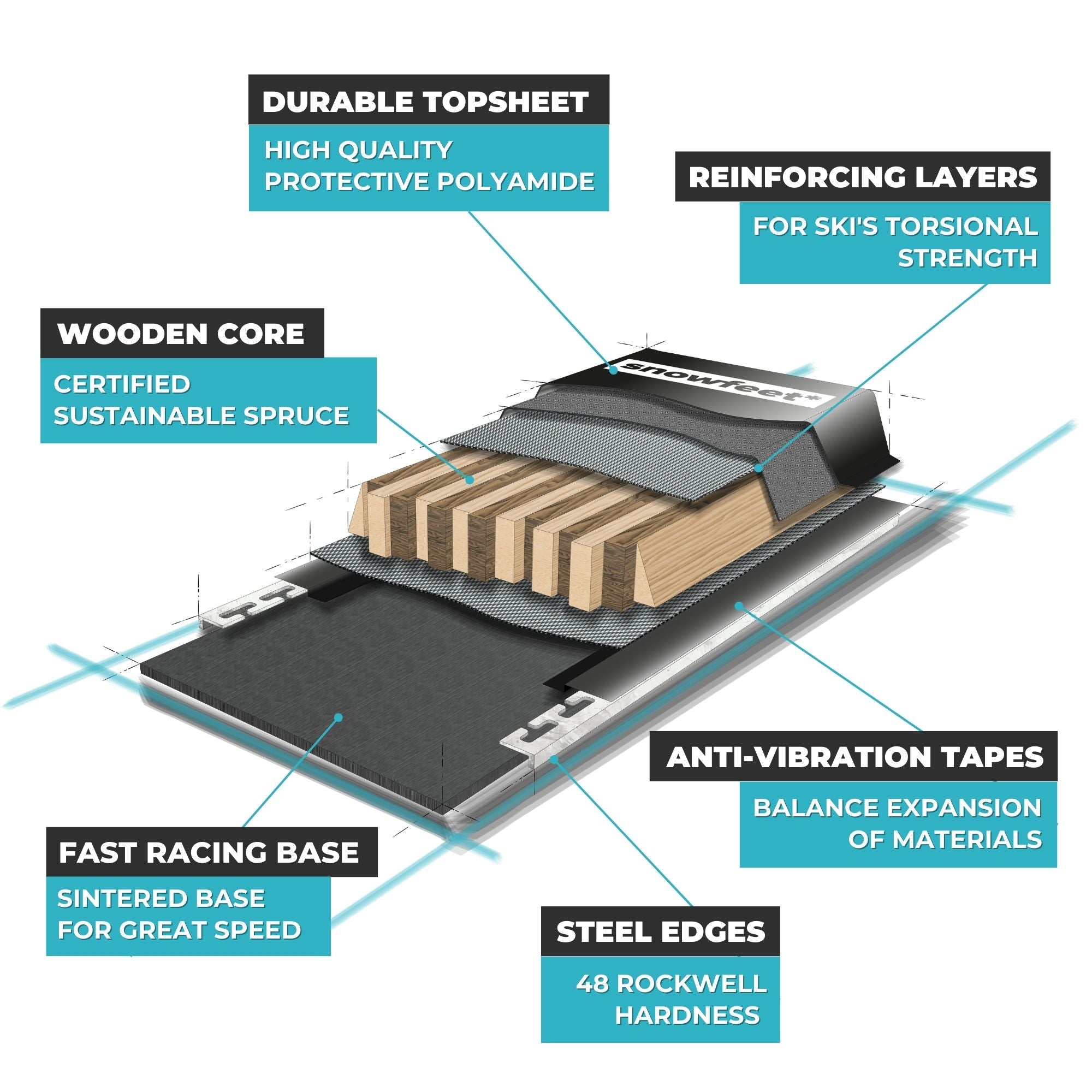
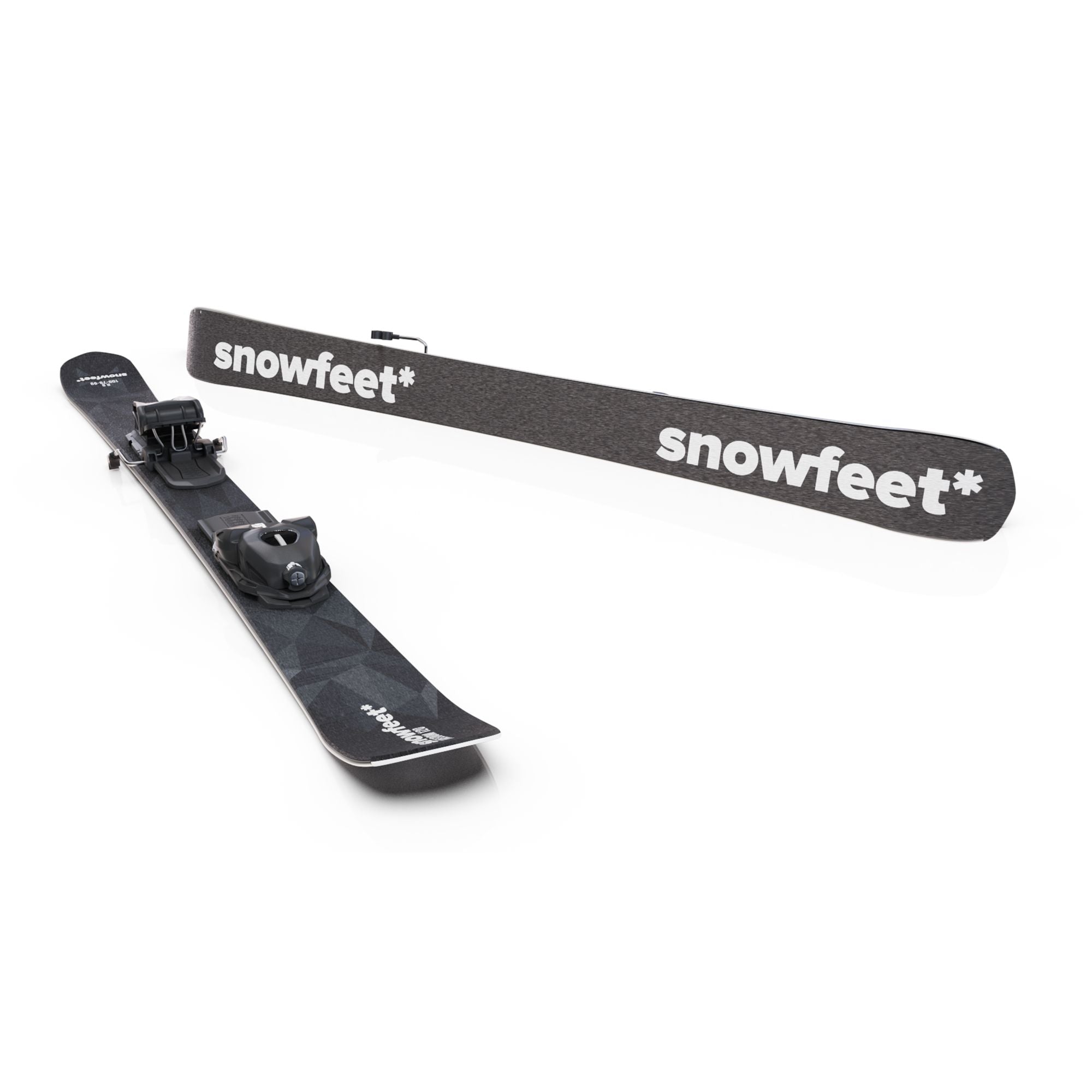
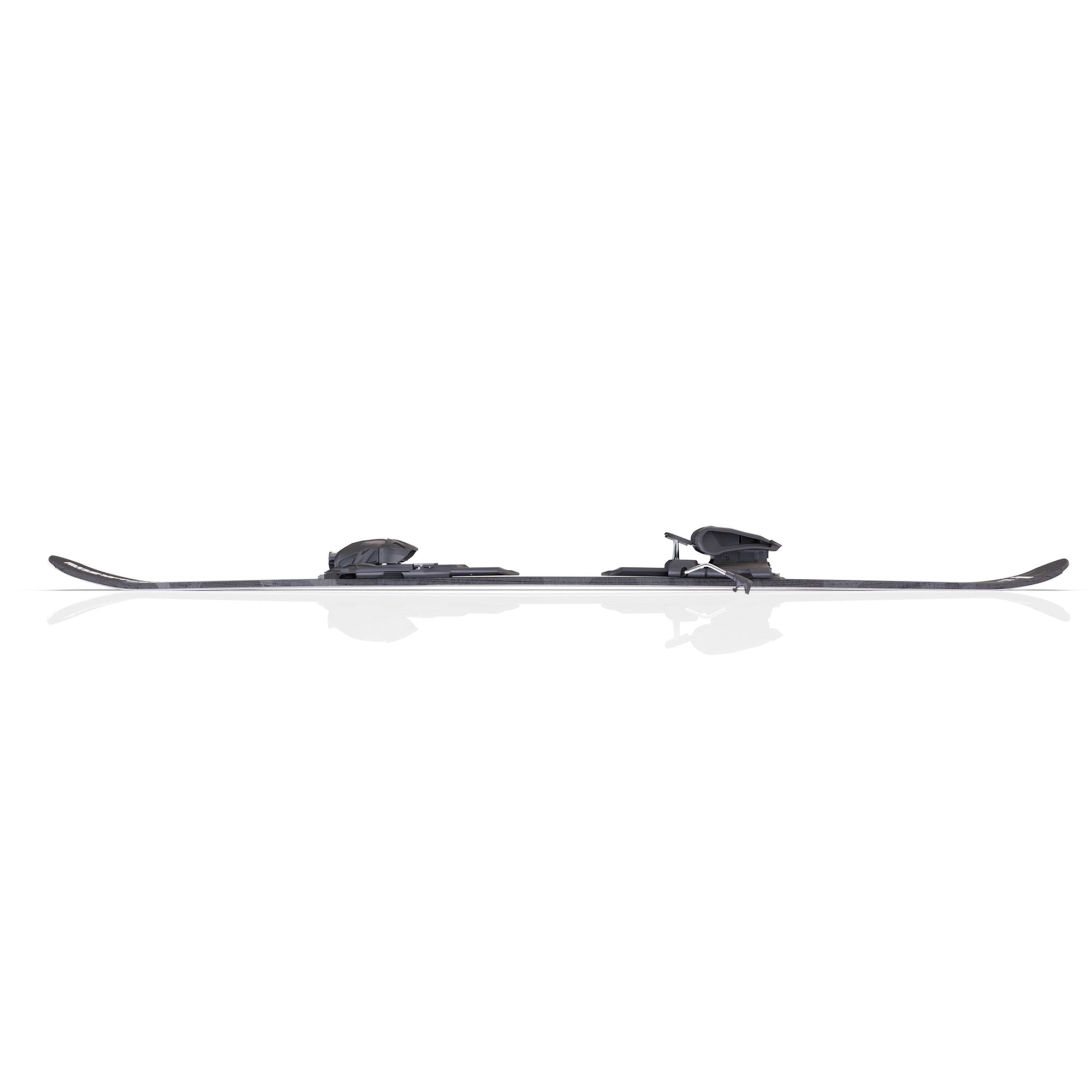



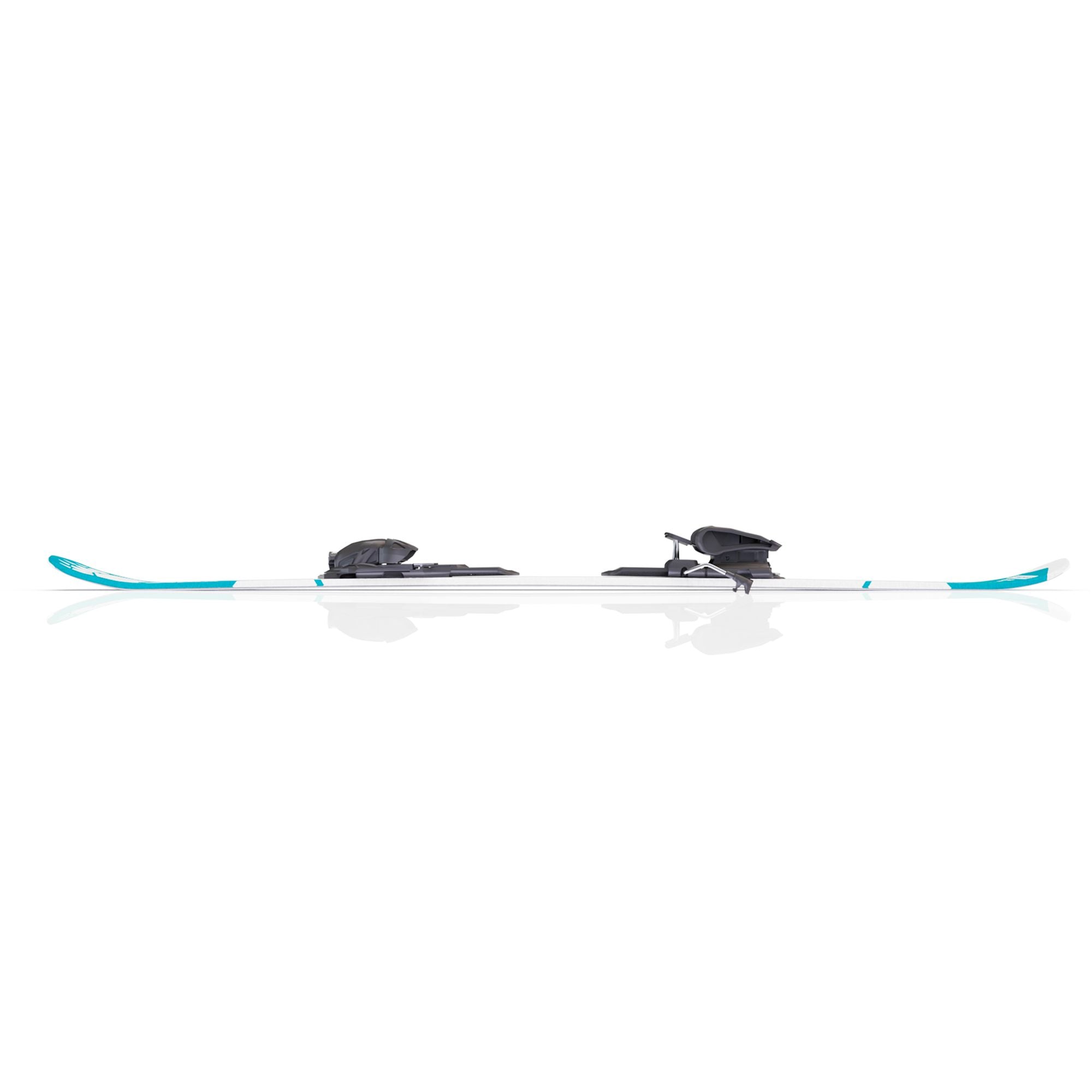

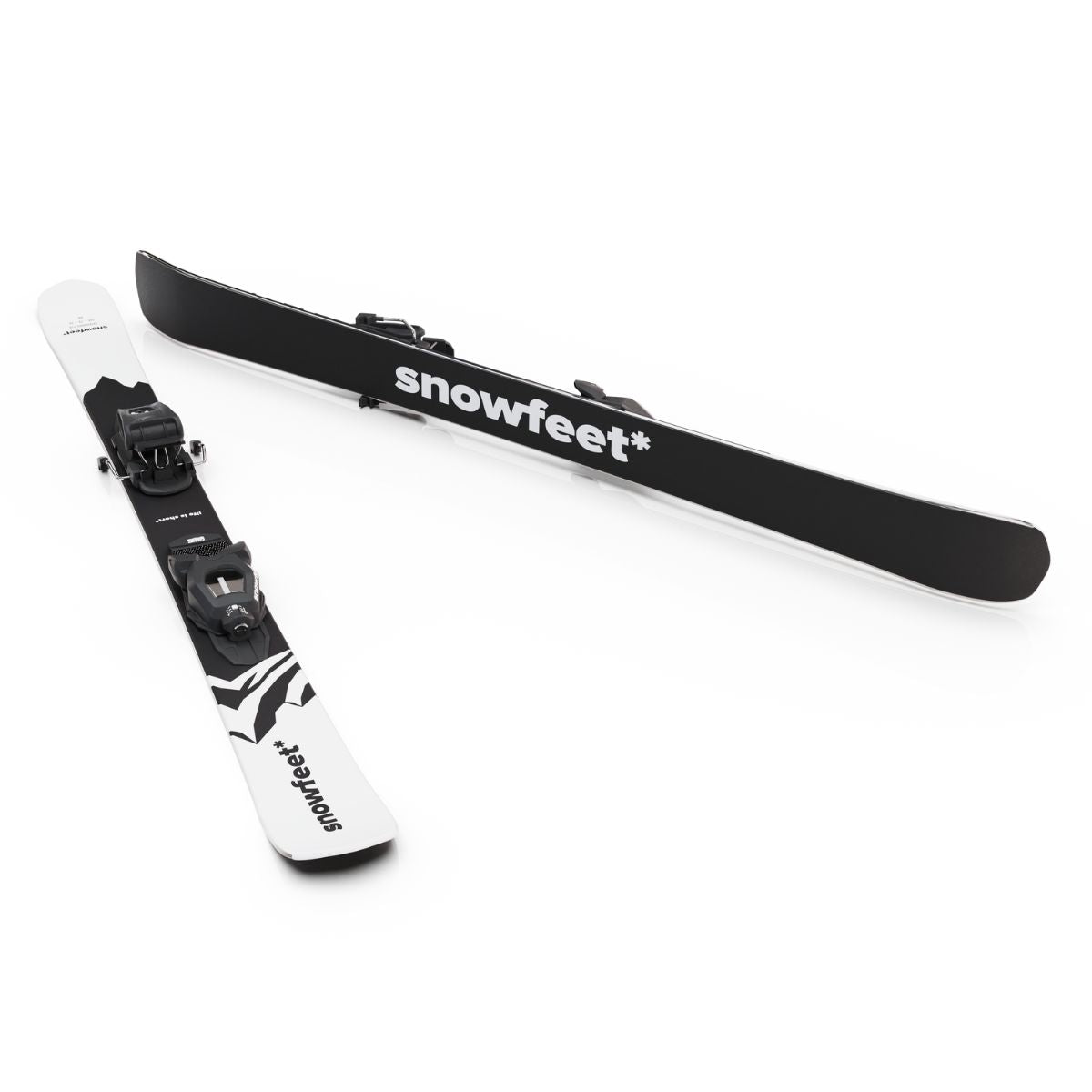

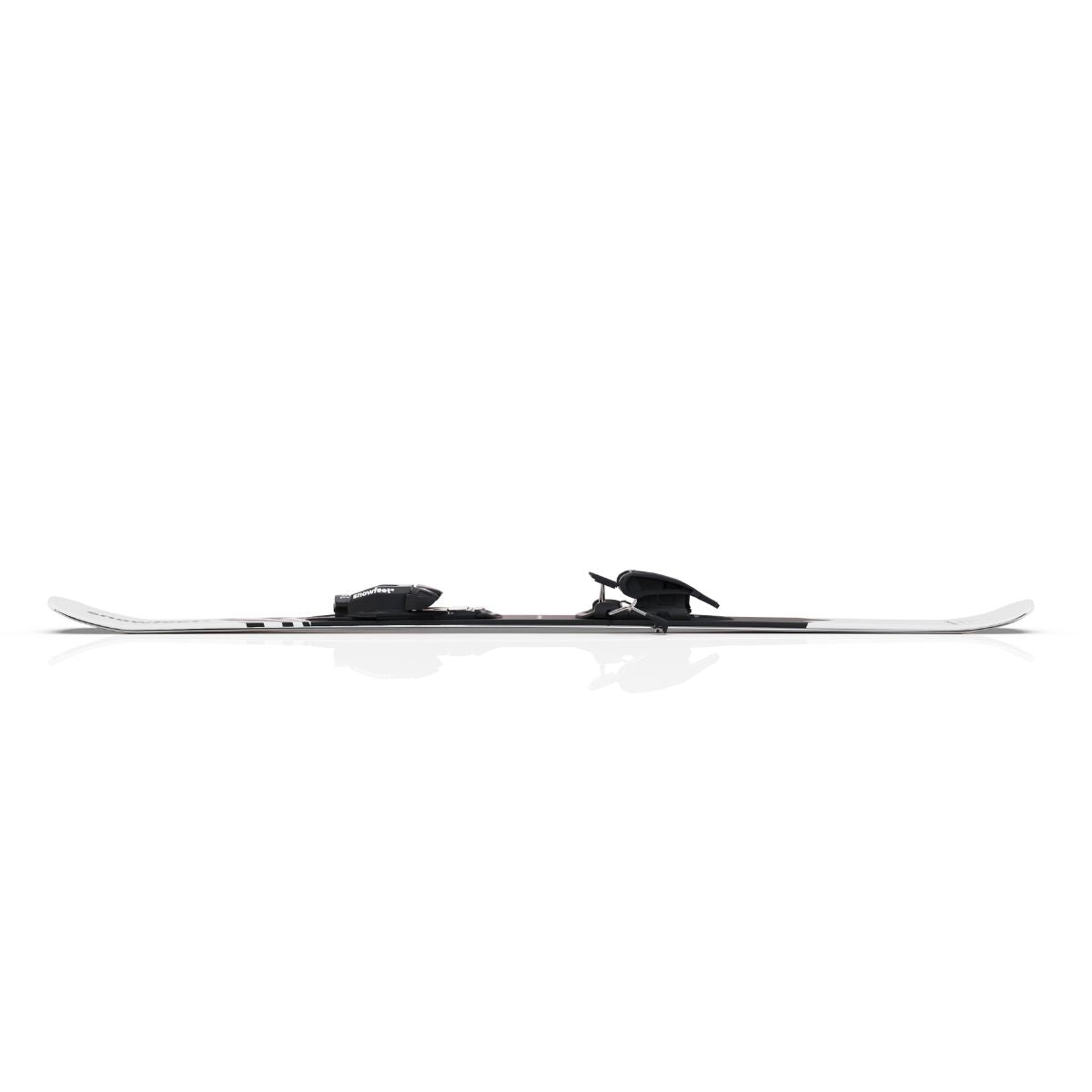



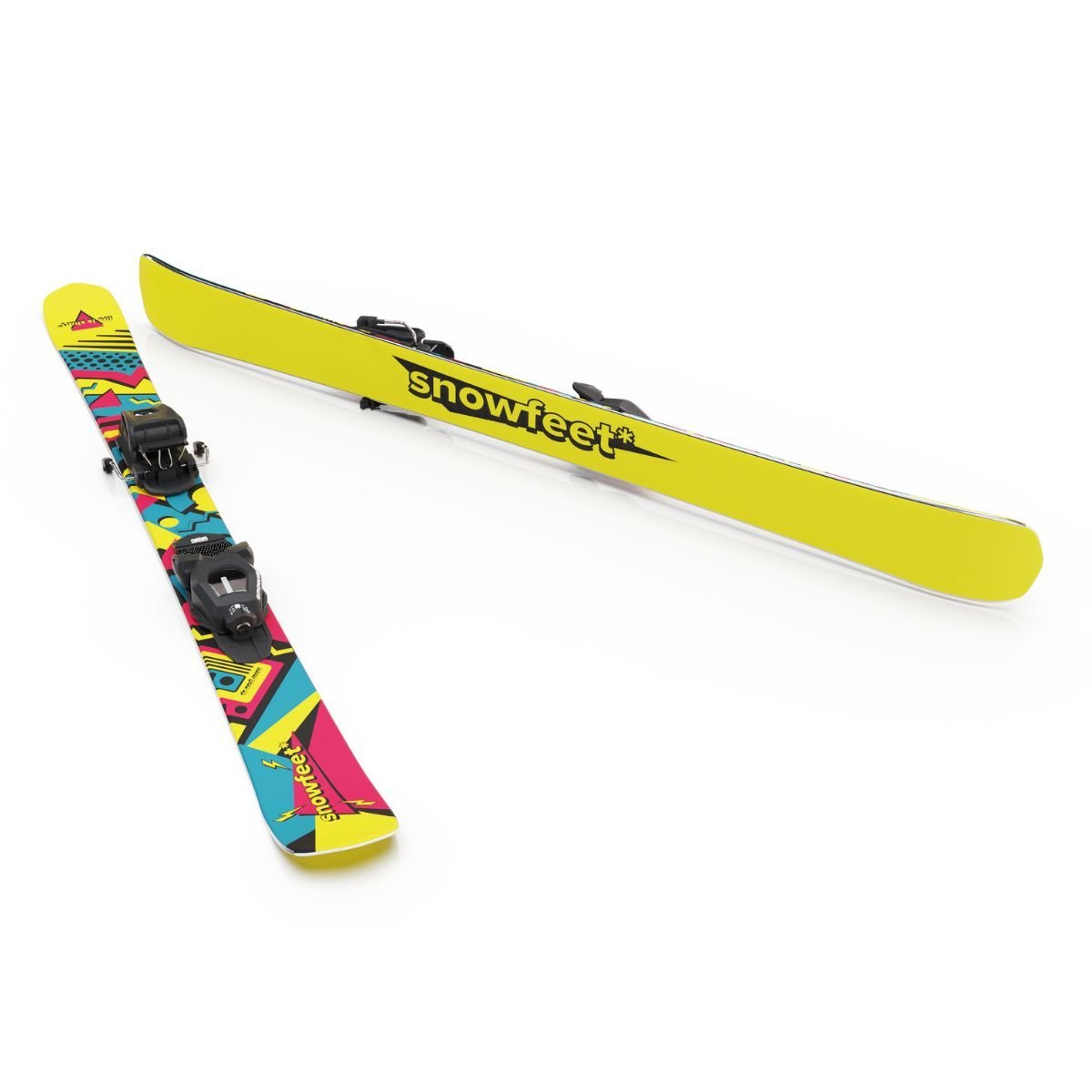


How to Choose the Best Skis for Beginners & Intermediate Skiers?
Finding the right skis as a beginner or intermediate skier can make a huge difference in your learning experience and overall enjoyment on the slopes. Beginner skis offer excellent value and are specifically designed to be easy to use, helping you master essential skills like turning, balancing, and controlling your speed. They make learning to ski faster, easier, and more enjoyable.
When choosing the best skis for beginners or intermediate skiers, it's important to consider several key factors, including ski length, shape, flex, and the type of terrain you'll be skiing on. The right skis will help you gain confidence and improve your technique more quickly.
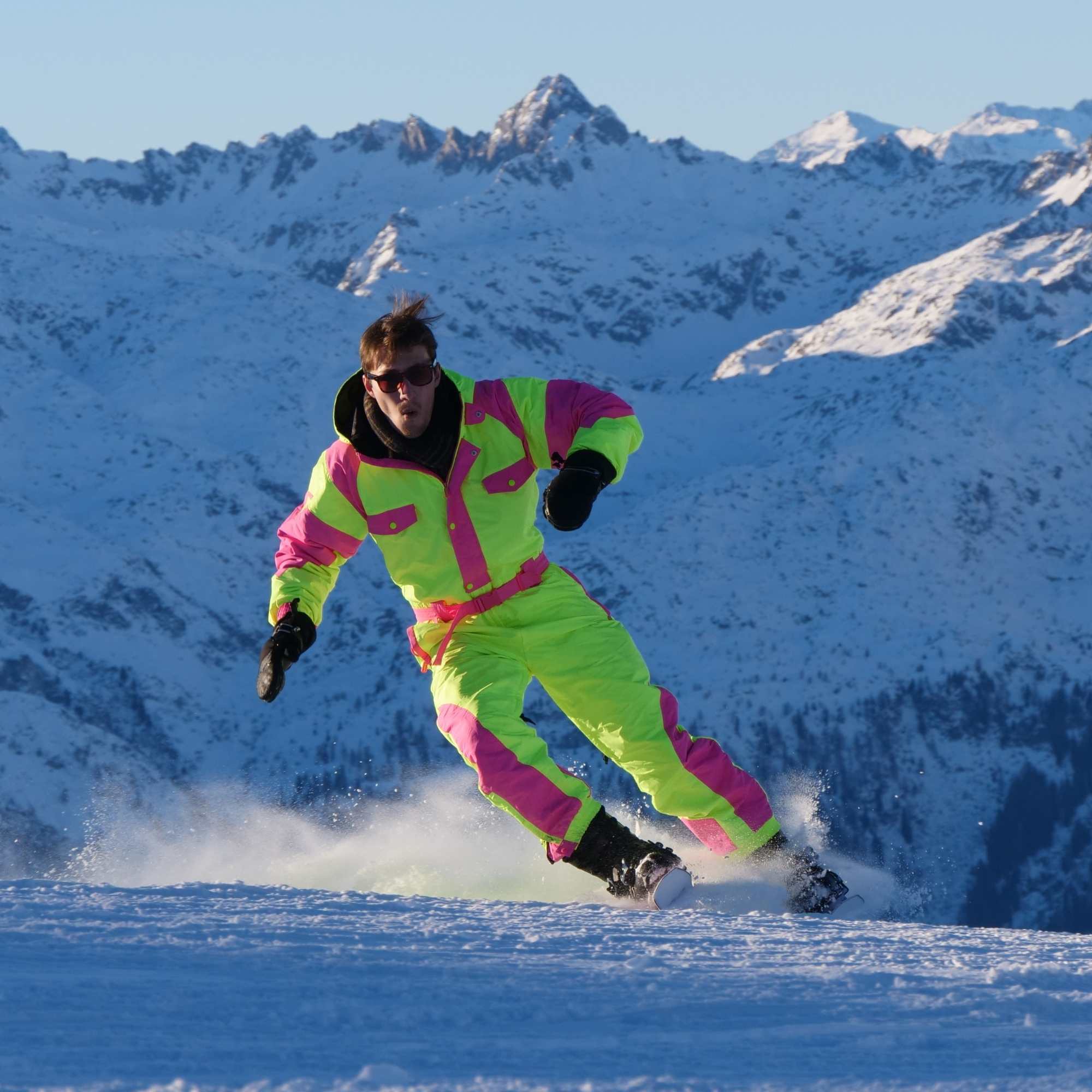
Shorter = better
Add your subtitle
Short skis are more suitable for beginners and intermediate skiers. They offer increased maneuverability and are easier to control, making them ideal for learning basic techniques and building confidence on the slopes.
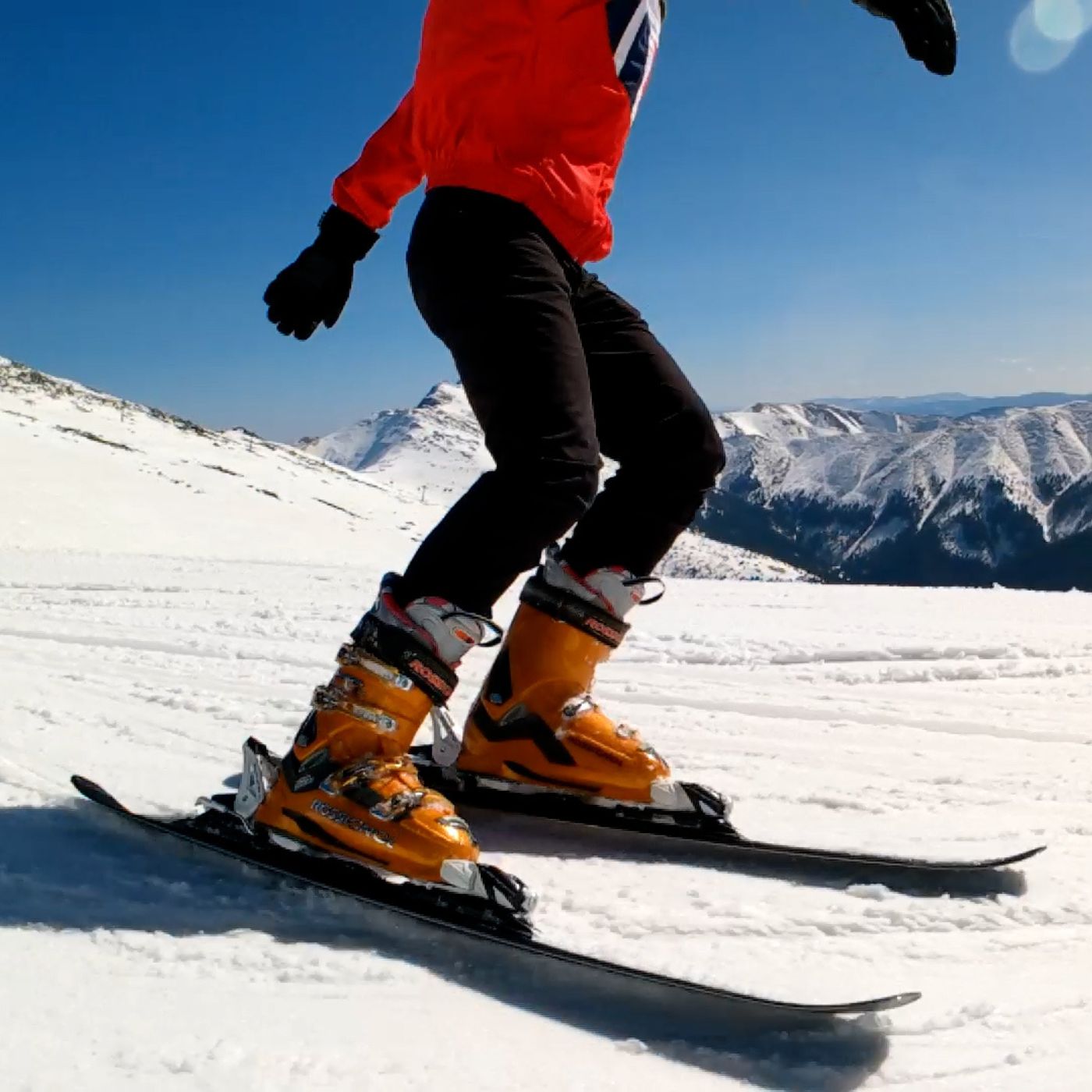
Soft forgiving flex
Add your subtitle
Beginner skis are more flexible. You can bend them easily when you turn or put pressure on them. This makes turning smoother and reduces the chances of catching an edge and falling.
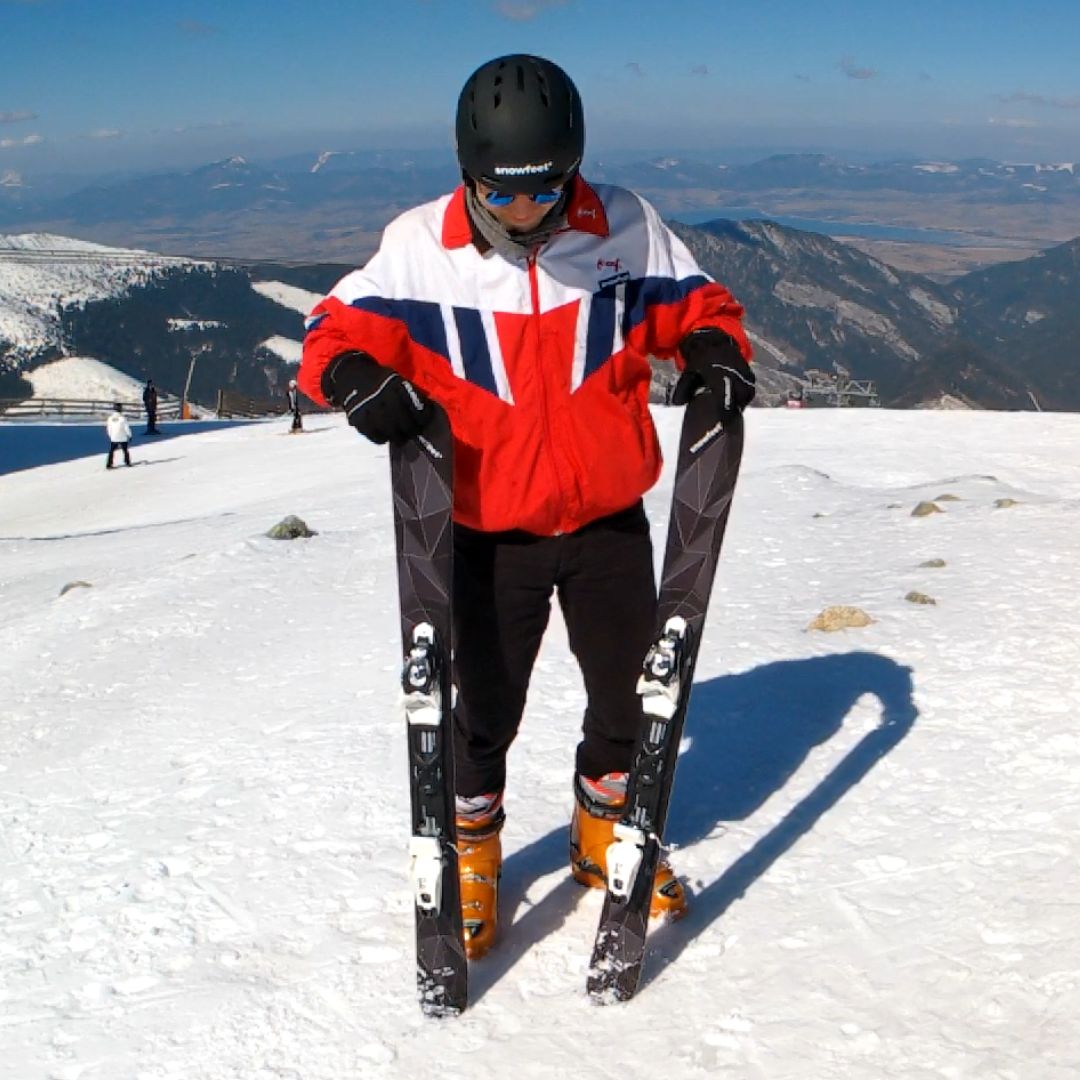
Waist width
Add your subtitle
Beginner skis are wider in the middle. Wide skis give you more surface area on the snow, which helps you stay balanced. This extra width also makes it easier to turn and stop because you have more stability under your feet.
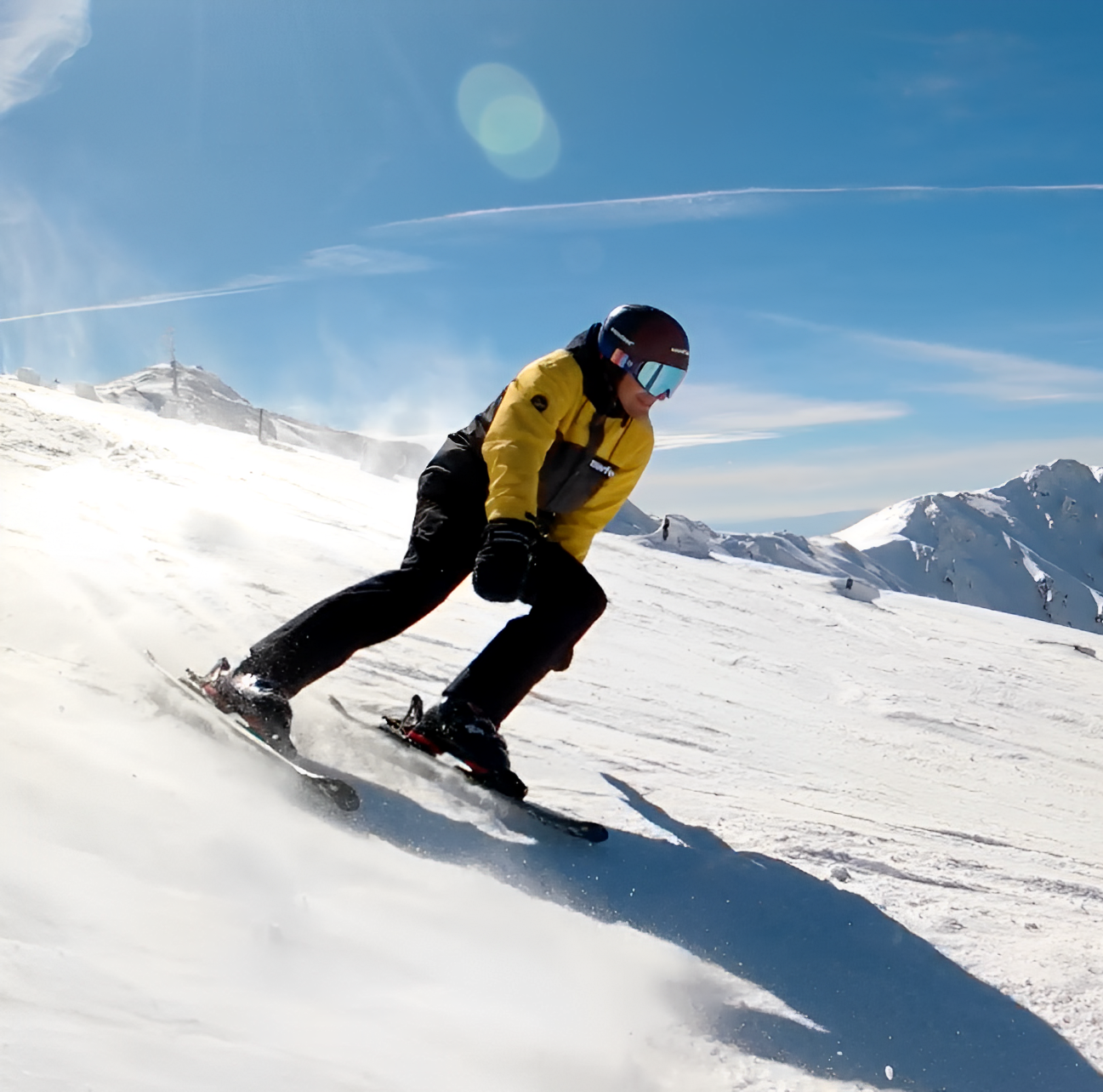
Match Skis to Your Skill Level
Add your subtitle
When choosing skis, it's essential to consider your skill level. Short skis are ideal for beginners because they are easier to control and help you progress faster. If you're new to skiing, they’re a great choice for mastering the essentials.
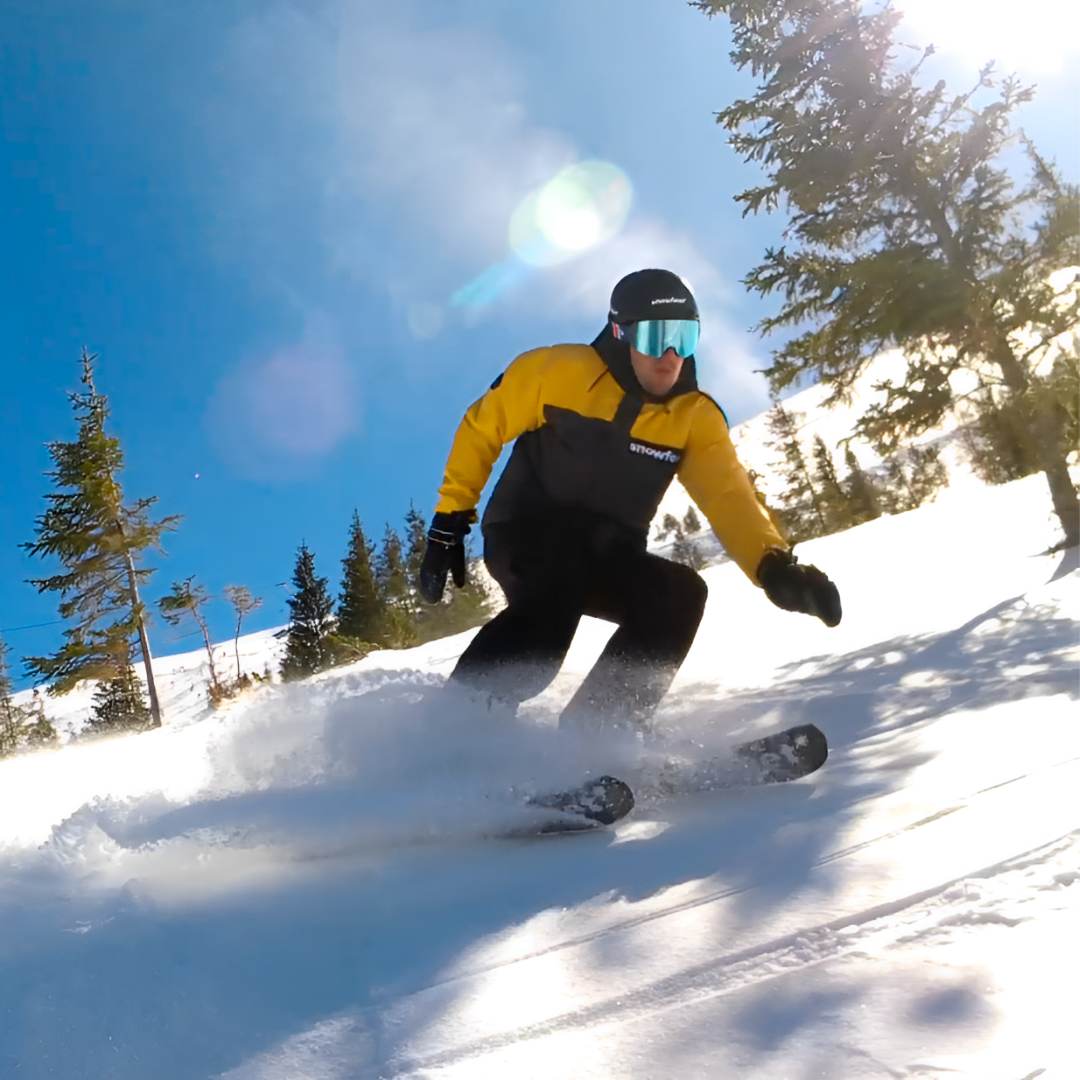
Choose the Right Skis for Your Style
Add your subtitle
Think about how and where you like to ski – groomed slopes, snowparks or backcountry? All-mountain skis are great for beginners on smooth slopes, offering versatility and ease of use.
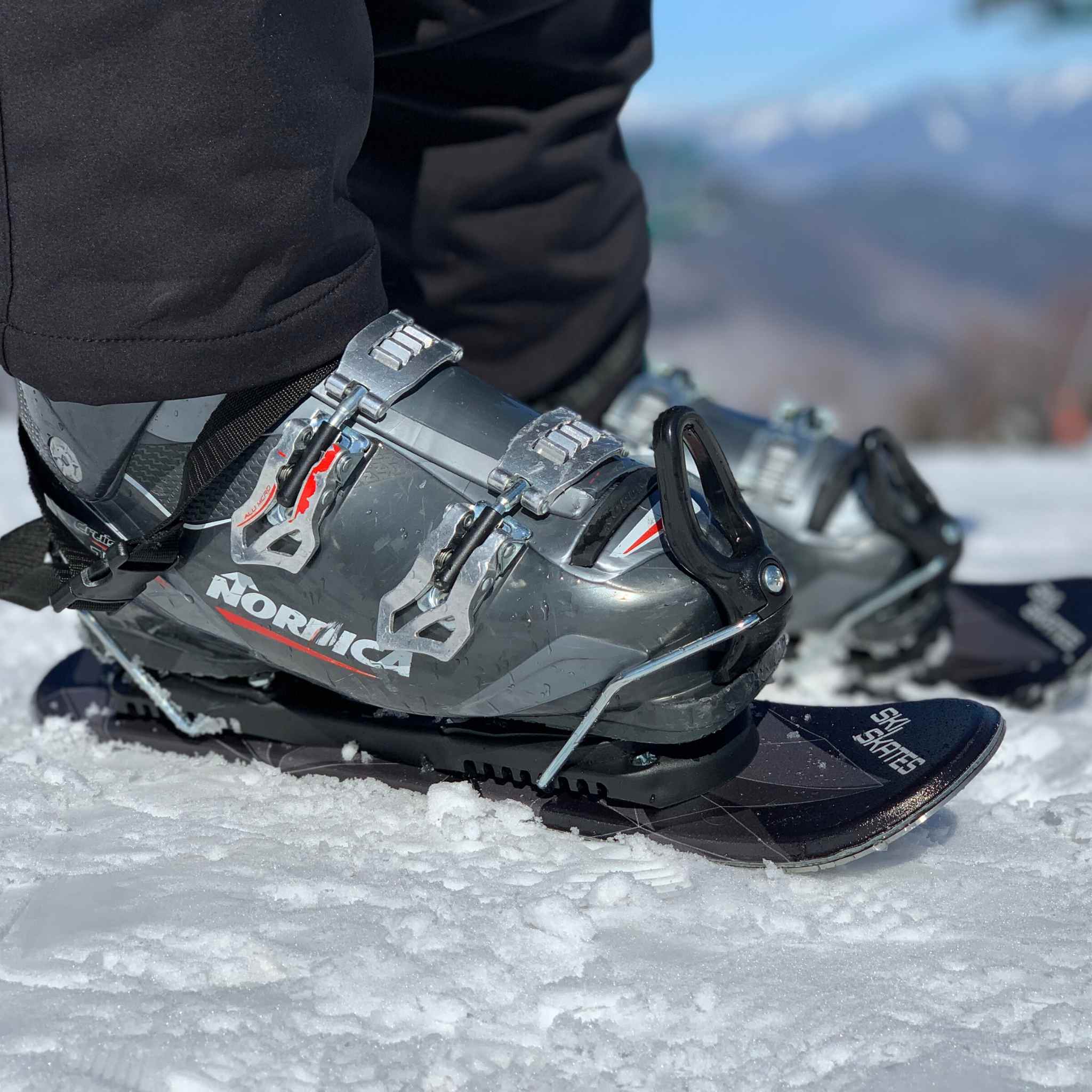
Bindings
Add your subtitle
Our Snowfeet short skis offer bindings for both regular ski boots and snowboard boots. Choose bindings that fit securely and are easy to adjust. For the best experience, have them adjusted professionally for your skill level.
Shorter = better
Add your subtitle
Short skis are more suitable for beginners and intermediate skiers. They offer increased maneuverability and are easier to control, making them ideal for learning basic techniques and building confidence on the slopes.
Soft forgiving flex
Add your subtitle
Beginner skis are more flexible. You can bend them easily when you turn or put pressure on them. This makes turning smoother and reduces the chances of catching an edge and falling.
Waist width
Add your subtitle
Beginner skis are wider in the middle. Wide skis give you more surface area on the snow, which helps you stay balanced. This extra width also makes it easier to turn and stop because you have more stability under your feet.
Match Skis to Your Skill Level
Add your subtitle
When choosing skis, it's essential to consider your skill level. Short skis are ideal for beginners because they are easier to control and help you progress faster. If you're new to skiing, they’re a great choice for mastering the essentials.
Choose the Right Skis for Your Style
Add your subtitle
Think about how and where you like to ski – groomed slopes, snowparks or backcountry? All-mountain skis are great for beginners on smooth slopes, offering versatility and ease of use.
Bindings
Add your subtitle
Our Snowfeet short skis offer bindings for both regular ski boots and snowboard boots. Choose bindings that fit securely and are easy to adjust. For the best experience, have them adjusted professionally for your skill level.






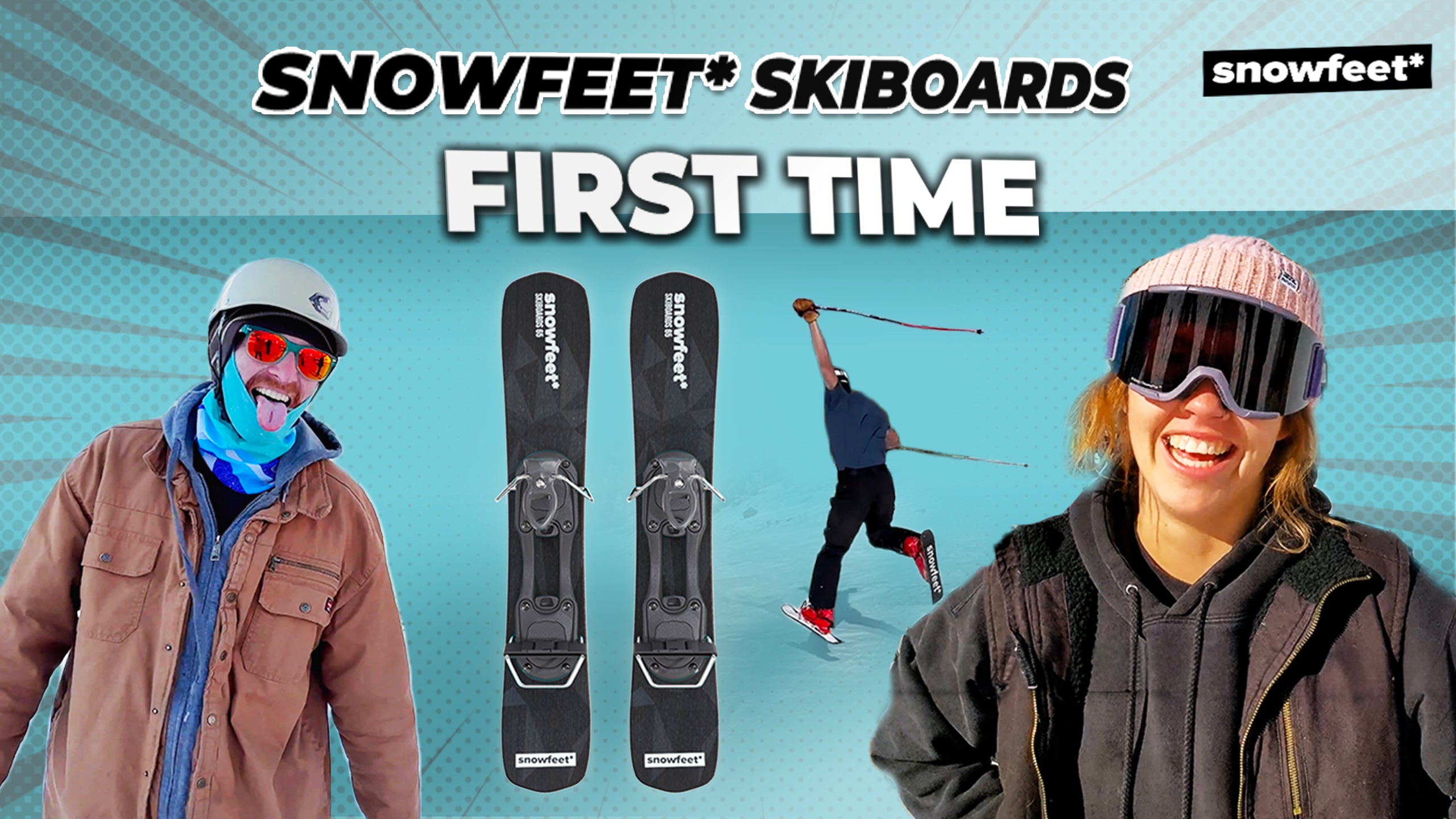
Why Snowfeet Skis Are the Best Choice for Beginners
They're lighter, easier to control, so it's simpler for beginners to turn and stop. They require less effort to manage, so you will gain confidence and balance on the slopes more quickly. Snowfeet skis make learning more fun!
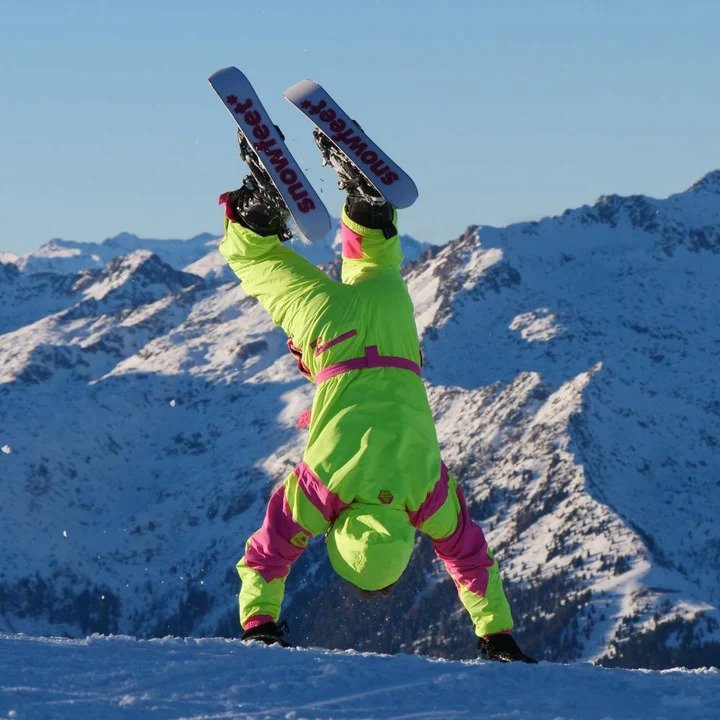
Fun and Freedom
Short skis are super fun for riding backwards, spinning, jumping and all kinds of tricks on the slopes and in snow parks.
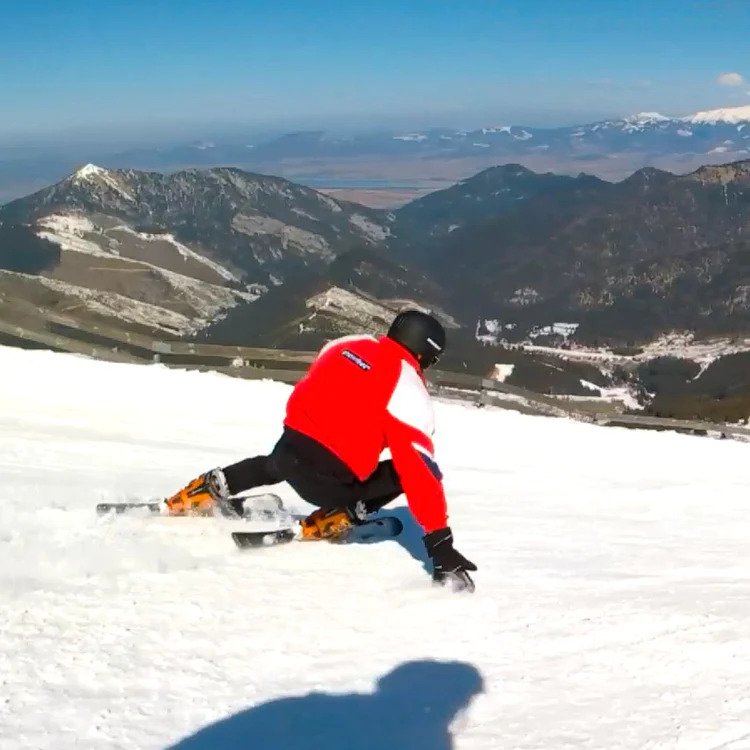
Easy to Learn
Fast learning curve. Great for beginners, intermediates who want to enjoy their ski trip to the fullest.
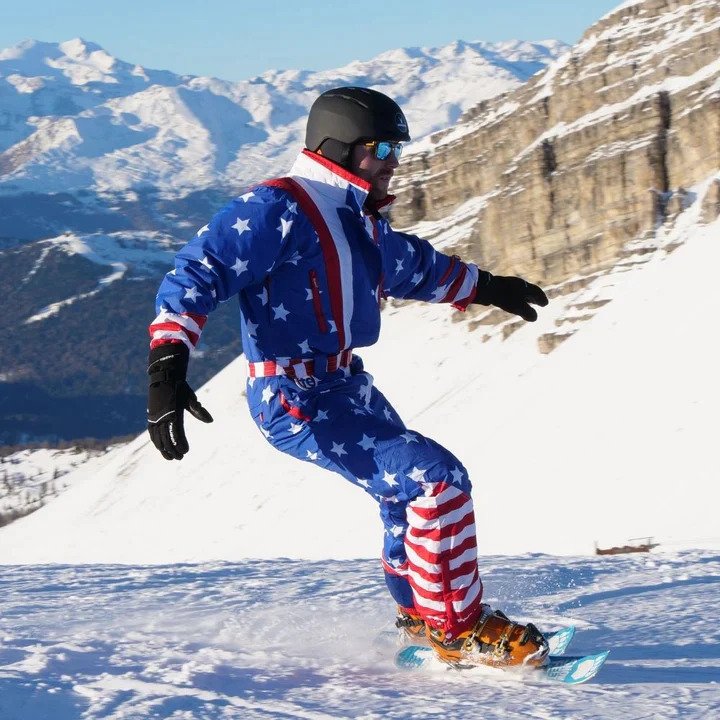
Simple to control
Short skis are easier to handle and offer better control, which makes them the perfect choice for beginners and intermediates.
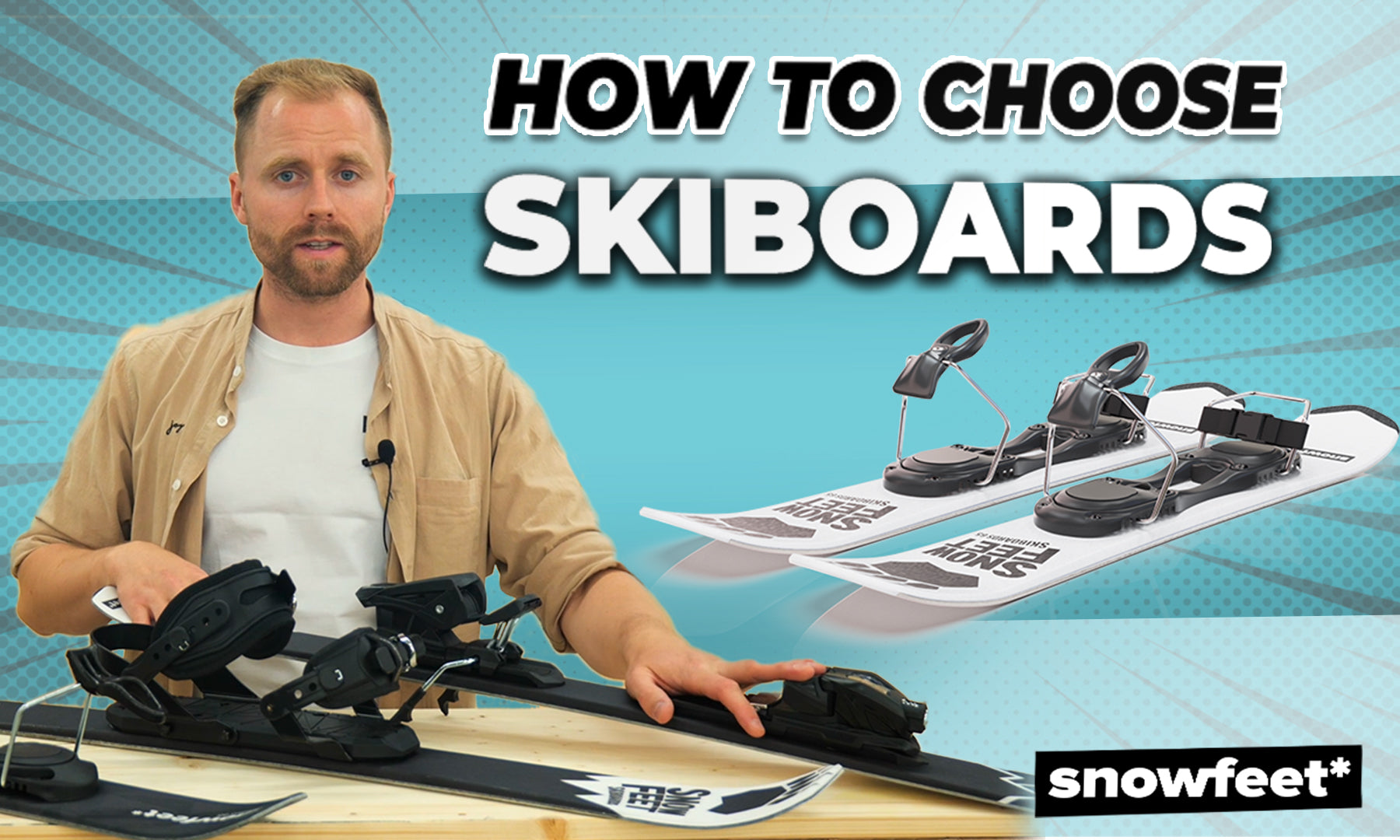
Choose the Lenght
Not sure which ski length is right for you? Whether you're after more agility, control, or stability, each length offers specific benefits. Check below to see which ski length suits your skiing style and experience level.


65 cm | 26 inch
99 cm | 39 Inch
120 cm | 47 Inch
- Ski bindings
- Snowboard bindings
- Ski bindings
- Pro ski bindings
- Snowboard bindings
- Pro ski bindings
Long enough to ski, short enough to skate. Fun tricks, jumps and twists on slopes and in snow parks. Feels a bit like skates on snow.
The ultimate skiboards. Long enough for deep carving on the slopes with more freedom of movement, fun jumps and tricks in snow parks, and in powder.
The ultimate skis. Amazing carving experience. You don't need anything longer to enjoy skiing to the fullest.
High-quality Construction
At Snowfeet, we use only the highest-quality materials to craft our products. Each design is unique and innovative, with the goal of delivering the best-in-class performance in every category. Our commitment to quality ensures durable, top-performing gear for every skier.
Skis for beginners FAQ
Are shorter (small) skis better for beginners?
Shorter skis are easier for beginners because they are easier to turn and control. They're lighter and more maneuverable, which can help you learn faster. However, it's also important to consider your height, weight, and skiing style when choosing skis.
What are short skis called?
Skiblades, snowblades, skiboards, bigfoot - call them whatever you want, these short skis are the most fun you can possibly have on a mountain as a skier.
What are the best skis for beginners and intermediate skiers?
For beginners and intermediate skiers, the best skis are typically ones that are shorter, forgiving, easy to turn and provide stability. Look for skis with a softer flex, which means they bend more easily, making them easier to control. Skis with a wider waist width provide better stability and are easier to balance on.
What size skis for beginners?
Shorter skis are more suitable for beginners because they are lighter, easier to control so it's simpler for to turn and stop. They require less effort to manage, so you will gain confidence and balance on the slopes more quickly. The Snowfeet Skiblades are perfect for beginners and intermediate skiers. You can choose from different lengths, from 65 cm (26 inches) to 140 cm (55 inches) to suit your needs.
Are shorter skis easier to control?
Yes, shorter skis are easier to control because they are more maneuverable and require less effort to turn. They're recommended for beginners because they're easier to manage while learning. However, ski length preference can vary based on individual skill level, skiing style, and terrain preferences.
Are Skiblades good for beginners?
Great for beginners, intermediates and pros who want to enjoy their ski trip to the fullest. Great for both kids and adults, teenagers and ski instructors. Ideal for adults teaching kids skiing because they allow for very agile movements. These skiboards are light and easy to ride as opposed to cumbersome (heavy) long skis. Age limit: 5 - 105
Are wider skis better for beginners?
Sure! They provide more stability and make it easier to balance on the snow. Wider skis also offer better flotation, which can be helpful when skiing in softer or deeper snow conditions.
What are some common mistakes when choosing skis for beginners?
Wrong Length: Choosing skis that are too long or too short can affect control and balance.
Wrong Width: Skis that are too wide or too narrow may not match the beginner's skill level or the type of skiing they want to do.
Ignoring Flex: Not considering the flex of the ski can make it harder to control and turn.
Neglecting Terrain: Not thinking about where they'll ski can lead to picking skis that aren't suitable for the terrain.
What are the reasons for buying shorter skis?
Easier to Control: Shorter skis are often easier to maneuver and control, making them a good choice for beginners or those who prefer agility.
Quick Turns: Shorter skis can make quick turns easier, which can be advantageous in tight spaces or when skiing in crowded areas.
Lighter Weight: Shorter skis tend to be lighter, which can be beneficial for skiers who prioritize less weight for transportation or maneuverability.
Playfulness: Shorter skis can feel more playful and nimble, allowing for easier tricks, jumps, and playful skiing styles.
What are the best beginner skis for women?
The best beginner skis for women are ones that are forgiving, easy to turn, and provide stability. Look for skis with a softer flex, which means they bend more easily, making them easier to control. Additionally, skis with a wider waist width provide better stability and are easier to balance on.
What ski gear do you need for skiing first time?
- Skis: Choose skis that match your skill level and the type of skiing you plan to do.
- Ski Boots: Make sure they fit snugly and comfortably, providing good support.
- Ski Poles: These help with balance and propulsion while skiing.
- Helmet: Essential for safety, protecting your head in case of falls.
- Goggles or Sunglasses: Protect your eyes from sun, wind, and snow glare.
- Ski Clothing: Wear layers including a waterproof jacket, pants, gloves, and thermal underwear.
- Socks: Choose moisture-wicking socks to keep your feet dry and warm.
- Sunscreen: Protect your skin from sunburn, even on cloudy days.
What bindings choose for beginners?
Beginners should choose bindings with softer flexibility because they're easier to handle and reduce the risk of getting hurt if they make mistakes. These bindings are forgiving and have lower release settings, making it simpler to remove boots when necessary. Stiffer bindings offer better power and response but need more precise movements, which might be harder for beginners.
Where can i use short skis? Are short skis allowed in ski resorts?
Best on the slopes and in snow parks. Easy and fun to handle moguls, bumpy terrain, and a little bit of powder. Ride anywhere you dare to go - access narrow hiking trails you wouldn’t be able to enjoy with long skis.
Explore Our Snowfeet* Blog

How Much Do Skis Weigh? Complete Weight Chart by Length & Category
Looking for skis that are easy to carry and perform well on the slopes? Here’s what you need to know: Traditional skis weigh between 6–12 lbs per pair and are great for stability, but they can b...

Custom Skiblades: Choose Your Colors
Looking for a fun, easy way to hit the slopes? Custom skiblades might be your answer! Here's why they're worth considering: What are skiblades? Short skis (26–47 inches) that are easier to learn...

Rocker vs Camber in Short Skis: Which Profile Suits Your Style?
Which short ski profile is right for you? It depends on your skiing style and the terrain you prefer. Camber offers strong grip and stability on groomed trails, while rocker makes turns smoother a...
#SNOWFEET
Join Our Growing Snowfeet Community

